
Category of Astronomical Heritage: tangible immovable
Manila Observatory, Quezon City, Philippines

Format: IAU - Outstanding Astronomical Heritage
Description
Geographical position - InfoTheme: Astronomy from the Renaissance to the mid-twentieth century
Entity: 187
Subentity: 1
Version: 3
Status: PUB
Date: 2022-12-03 03:45:50
Author(s): Gudrun Wolfschmidt
Manila (Jesuit) Observatory, Observatorio Meteorológico del Ateneo Municipal de Manila
- Mirador Observatory, Baguio, Benguet, Luzon, Philippines
- Modern Manila Observatory, Ateneo de Manila University in Quezon City, Metro Manila, Luzon, Philippines
Location - InfoTheme: Astronomy from the Renaissance to the mid-twentieth century
Entity: 187
Subentity: 1
Version: 2
Status: PUB
Date: 2021-04-21 06:28:25
Author(s): Gudrun Wolfschmidt
Latitude 14.63667°N, Longitude 121.07667°E, Elevation ...m above mean sea level.
IAU observatory code - InfoTheme: Astronomy from the Renaissance to the mid-twentieth century
Entity: 187
Subentity: 1
Version: 1
Status: PUB
Date: 2021-04-21 06:24:53
Author(s): Gudrun Wolfschmidt
-
Description of (scientific/cultural/natural) heritage - InfoTheme: Astronomy from the Renaissance to the mid-twentieth century
Entity: 187
Subentity: 1
Version: 3
Status: PUB
Date: 2022-12-03 03:46:51
Author(s): Gudrun Wolfschmidt
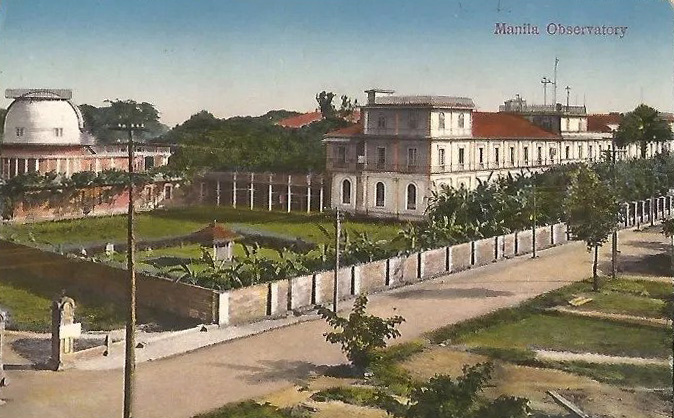
Fig. 1. Manila Observatory (1865), (Postcard)
Astronomy, timekeeping, solar observations, meteorology, terrestrial magnetism, and seismology played an important role in imperial expansion during the age of empire. After the suppression of the Society of Jesus (1773 to 1814) and the regeneration / restoration, Jesuit observatories were revived or newly erected in the 19th century, e.g. outposts of scientific excellence were established in the tropics, besides Manila (Philippines, est. 1865), <a href="https://www3.astronomicalheritage.net/index.php/show-entity?identity=188&idsubentity=1" target="_blank">Belén Observatoy at Havana</a> (Cuba, est. 1857), <a href="https://www3.astronomicalheritage.net/index.php/show-entity?identity=207&idsubentity=1" target="_blank">Zikawei Observatory in Shanghai</a> (China, est. 1872), and Tananarive (now Antananarivo, Madagascar, est. 1889).
The Manila Observatory was founded by the Society of Jesus (Jesuit Observatory), in 1865 as the "Observatorio Meteorológico del Ateneo Municipal de Manila", later renamed "Observatorio Meteorológico de Manila" -- one of the first observatories established in the Far East, earlier than Batavia (Jakarta), Indonesia, in 1866 and Tokyo in 1875.
Francisco Colina (1837--1893), a teacher of mathematics, began meteorological observations in the secondary school founded by the Spanish Jesuits in Manila, Philippines, in 1860. The main tasks of Manila Observatory are weather forecasting and earthquake research and today research in seismology and geomagnetism as well as radio and solar physics.
The next director Francisco Faura (1840--1897) from Spain, director from 1878 to 1897, started to acquire instruments, like the famous Secchi meteorograph (1869). Inspired by the earthquake of 1870 in Manila, Ricart constructed two pendulums, horizontal and vertical, which were helpful during the strong earthquake of 1872.
Faura observed with two young Jesuits, Juan Ricart (1838--1915) and Jaime Nonell (1844--1922) the solar eclipse of 1868 on Mantawalok, a small island of the Celebes archipelago; they met Utrecht astronomers. The results were sent to Madrid and to Secchi in Rome and were published in the Bulletin of the Observatory of the Collegio Romano. Then he travelled through Europe, to Spain in 1871 and to the Collegio Romano in 1877, to Stonyhurst, and he visited also observatories in Italy and met Italian seismologists. In 1879, Faura studied typhoons (called baguios in the Philippines). He successfully forecasted the serious typhoon of 1879 in Manila -- the first official storm warning in the Far East.
In 1887, the Meteorological Service was supplemented by official timekeeping, using a Time Ball at noon, followed by a cannon shot in the harbour of Manila. In addition, the observatory developed a system of visual signs in order to inform mariners of severe storm weather.
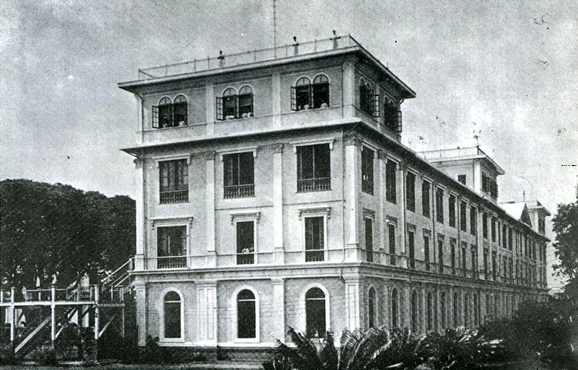
Fig. 2a. Manila Observatory (1865 to 1945), Padre-Faura-Street (Postcard)
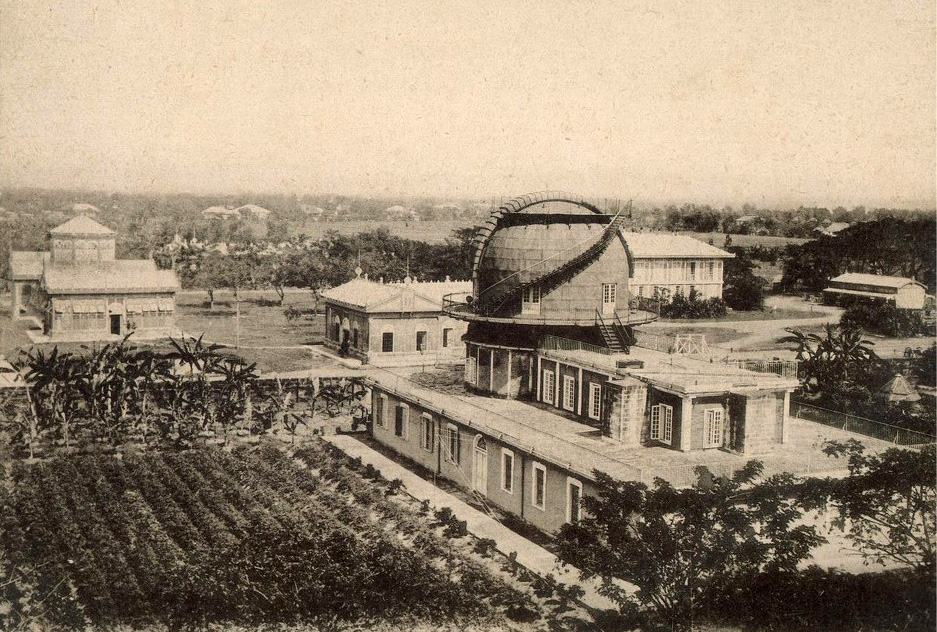
Fig. 2b. Jesuit Optical Observatory in Manila-Ermita (Postcard)
A new observatory building was erected (1886) near to a new Jesuit school in the south of Manila. Now Faura had enough space for offices, library and a tower for meteorological instruments.
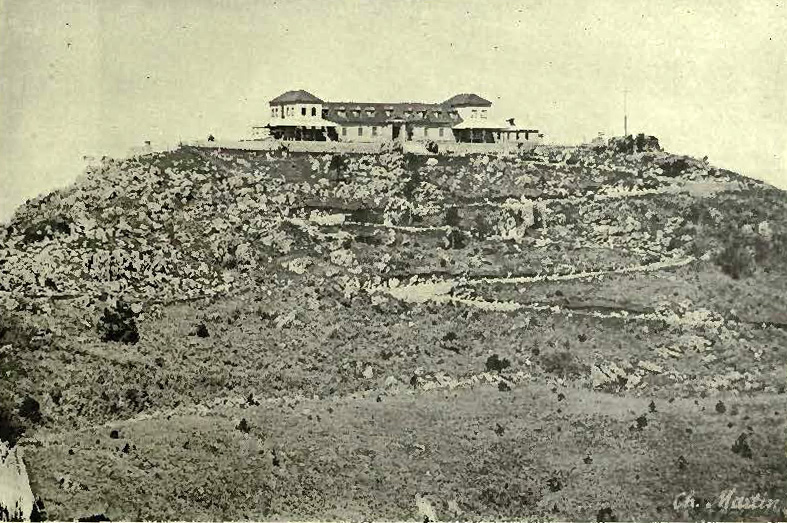
Fig. 2c. Mirador Observatory (1909), (Algué 1909, Pl-I)
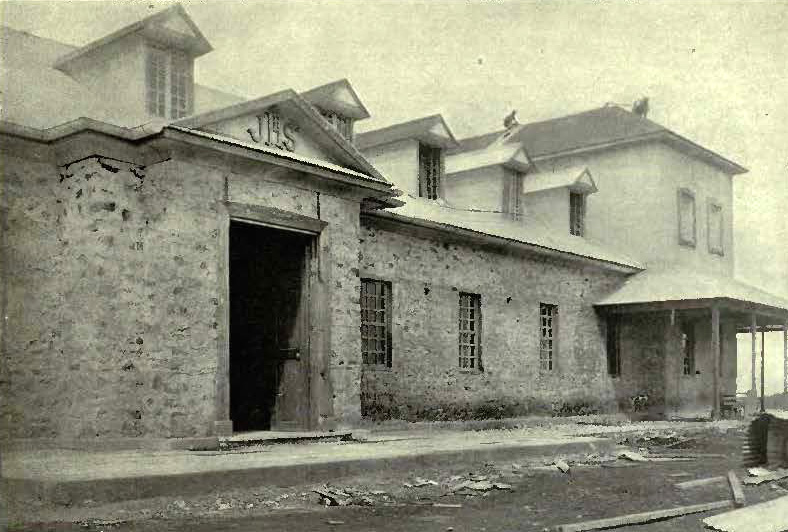
Fig. 2d. Mirador Observatory (1909), (Algué 1909, PVl-I)
In addition, the Mirador Observatory with four towers was erected on Mirador (Mount Lookout, 132m), Baguio, Benguet, as a new meteorological-geodynamic station of the Weather Bureau (1909) (Algué 1909).
Timeline of development: In 1879 warnings of typhoons and in 1880 earthquake observations. In 1884, Manila Observatory as an official institution for weather forecasting in the Philippines recognized -- 1901 Philippine Meteorological Office.
Time service started in 1885, seismology in 1887 and astronomy in 1899.
The Manila Observatory was destroyed in 1945. After WWII, in 1962, a new Manila Observatory building was erected on Loyola heights near the campus of Ateneo de Manila University in Quezon City (Diliman in 1962). The emphasis of research was seismology and sun-earth-relationsships (solar studies, ionospheric research, radio physics, geomagnetic studies). Partners of Manila Observatory for research in environmental issues are PAGASA (Philippine Atmospheric Geophysical and Astronomical Services Administration), and PHIVOLCS (Philippine Institute of Volcanology and Seismology).
The old Mirador Observatory in Baguio, Benguet, was used as observing station for seismic and magnetic research, and a magnetic station in Davao -- close to the magnetic equator of the earth.
History - InfoTheme: Astronomy from the Renaissance to the mid-twentieth century
Entity: 187
Subentity: 1
Version: 4
Status: PUB
Date: 2022-12-03 03:48:36
Author(s): Gudrun Wolfschmidt
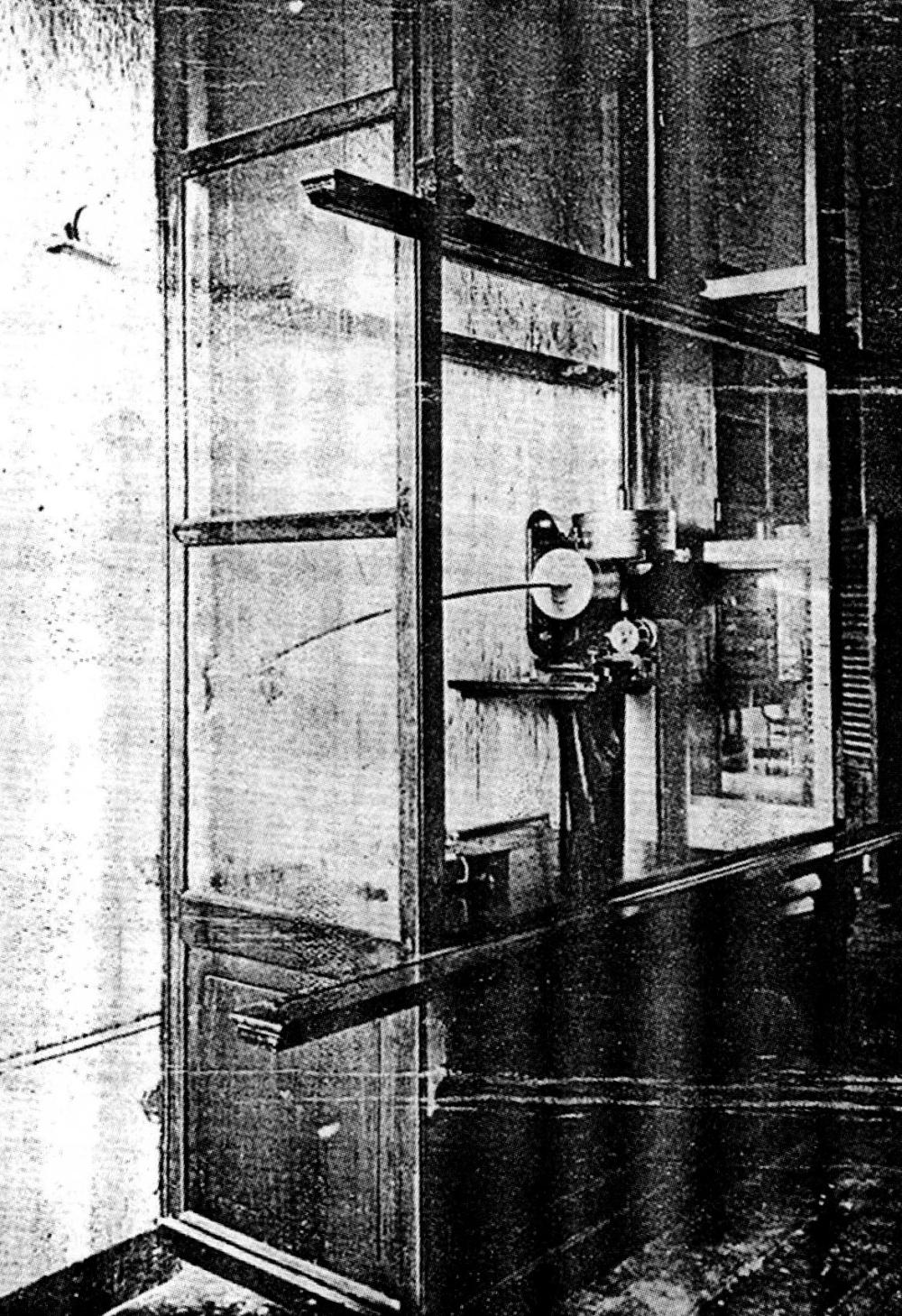
Fig. 3a. Secchi’s Meteorograph, Manila Observatory
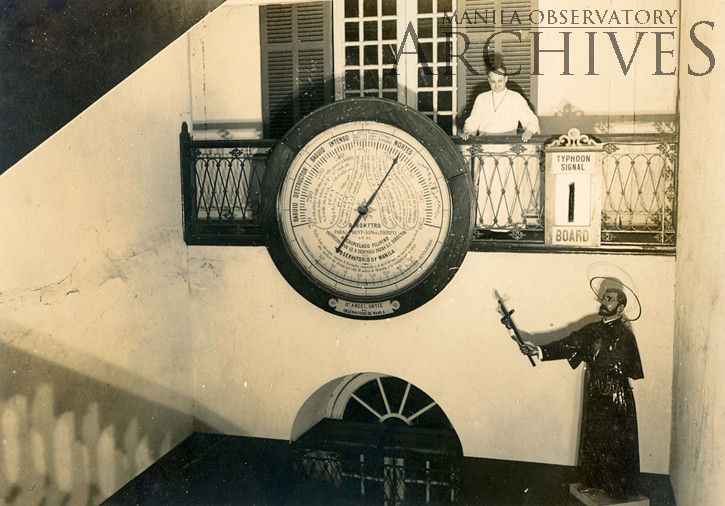
Fig. 3b. Large Aneroid Barometer of Manila Observatory (Manila Observatory Archives)
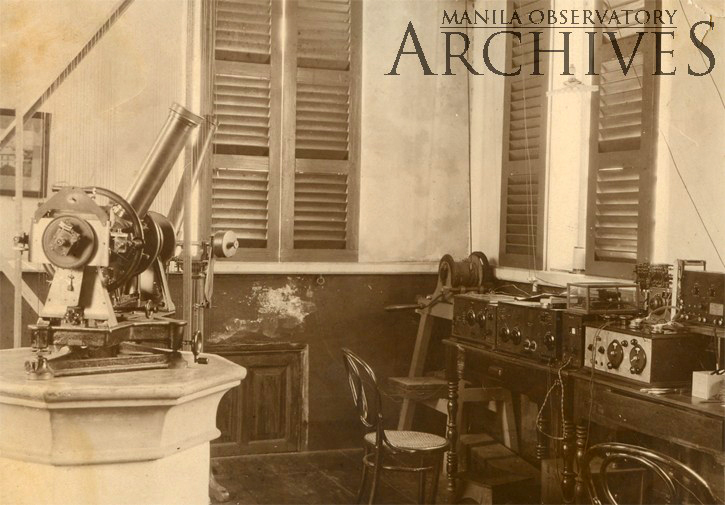
Fig. 3c. Time keeping room with Transit Instrument in Manila Observatory (1926), (Manila Observatory Archives)
Instruments
- Meteorological Instruments
- Fauras Large "Aneroid Barometer" (1886)
- Sprung-Puess and Richard Barographs
- Thermographs
- Heliographs
- Thompson electrometer by Mascart
- Secchi Universal Meteorograph
- Elliot Magnetometer and Dover Inclinometer
- Horizontal Seismograph and a vertical pendulum for visual observation
- Meridian telescope, made by Dollond
- 4-inch refractor for sunspot imaging and analysis
- 19-inch-Refractor, made by Merz of Munich (1897)
- The 14-inch-lens of the Grubb telescope, made by Cauchoix in the 1830s for Edward J. Cooper of Markree Castle, Co. Sligo, a respectable private observatory in 19th century Ireland, survived in Manila; the telescope, sold to a Jesuit seminary in Hong Kong in the 1930s, was destroyed in World War II.
- Solar Spectrograph, developed by Richard A. Miller
- 12-inch Heliostat with Spectroheliograph, -scope with Lyot filter
- 10-inch Solar Telescope (1970s) for H-alpha flares, and Calcium images
- Solar Radio Telescope

Fig. 4a. 19-inch-telescope of Manila Observatory (1900), (Danilo Billones, 1939)
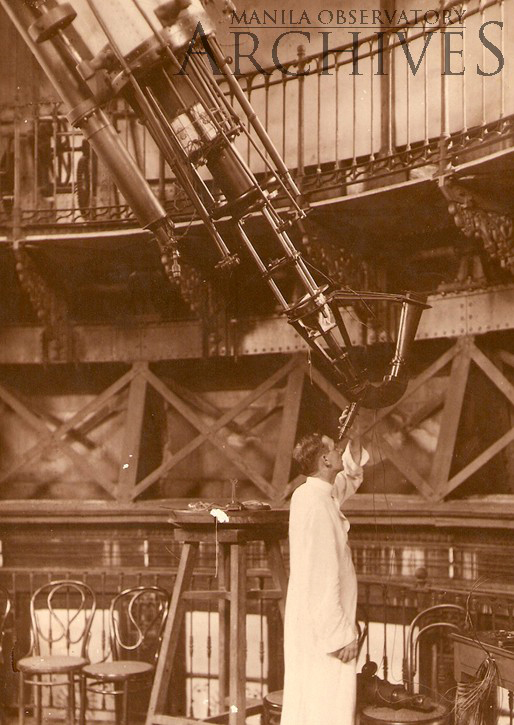
Fig. 4b. 19-inch-telescope of Manila Observatory (Manila Observatory Archives)
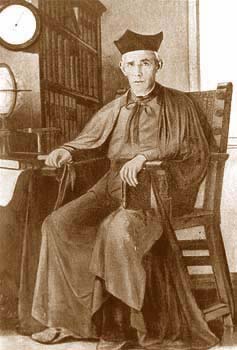
Fig. 5. Federico Faura (1840--1897), Director of Manila Observatory, 1878 to 1897
Directors
- Federico Faura (1840--1897), Director of Manila Observatory, (1866) 1878 to 1897 (MO).
- José Algué (1856--1925), Director of Manila Observatory, 1897 to 1925
- Miguel Selga, Director of Manila Observatory, 1926 to 1945 (MO), studied the speed, colour and rotation of Variable stars
- Charles E. Deppermann, Director of Manila Observatory, 1945 to 1957 (MO).
- Richard A. Miller, Chief Astronomer of Manila Observatory in Baguio, 1951, International Geophysical Year (1957), solar spectrograph
- James J. Hennessy, Director of Manila Observatory, 1957 to .... (MO),
Francis J. Heyden (1907--1991), retired from the Georgetown University Observatory, Chief Astronomer of Manila Observatory, 1972, Chief of the Solar Studies Division
State of preservation - InfoTheme: Astronomy from the Renaissance to the mid-twentieth century
Entity: 187
Subentity: 1
Version: 2
Status: PUB
Date: 2022-12-03 03:49:06
Author(s): Gudrun Wolfschmidt

Fig. 6. Ruins of Manila Observatory, 1945 (Manila Observatory Archives)
The original building of the Jesuit Observatory was destroyed in 1945.
Then, in 1962, a new building was erected for Manila Observatory
Comparison with related/similar sites - InfoTheme: Astronomy from the Renaissance to the mid-twentieth century
Entity: 187
Subentity: 1
Version: 3
Status: PUB
Date: 2022-12-03 03:53:11
Author(s): Gudrun Wolfschmidt
Outposts of scientific excellence were established in the tropics like Manila Jesuit Observatory (Philippines, est. 1865):
Belén Observatory in Havana (Cuba), Zikawei Observatory Shanghai, China (est. 1872), and Tananarive (now Antananarivo, Madagascar, magnetic observatory, est. 1889).
Present use - InfoTheme: Astronomy from the Renaissance to the mid-twentieth century
Entity: 187
Subentity: 1
Version: 2
Status: PUB
Date: 2022-12-03 03:51:05
Author(s): Gudrun Wolfschmidt
The Manila Observatory is mainly used for meteorology, seismology and sun-earth-relationsships.
Astronomical relevance today - InfoTheme: Astronomy from the Renaissance to the mid-twentieth century
Entity: 187
Subentity: 1
Version: 2
Status: PUB
Date: 2022-12-03 03:51:27
Author(s): Gudrun Wolfschmidt
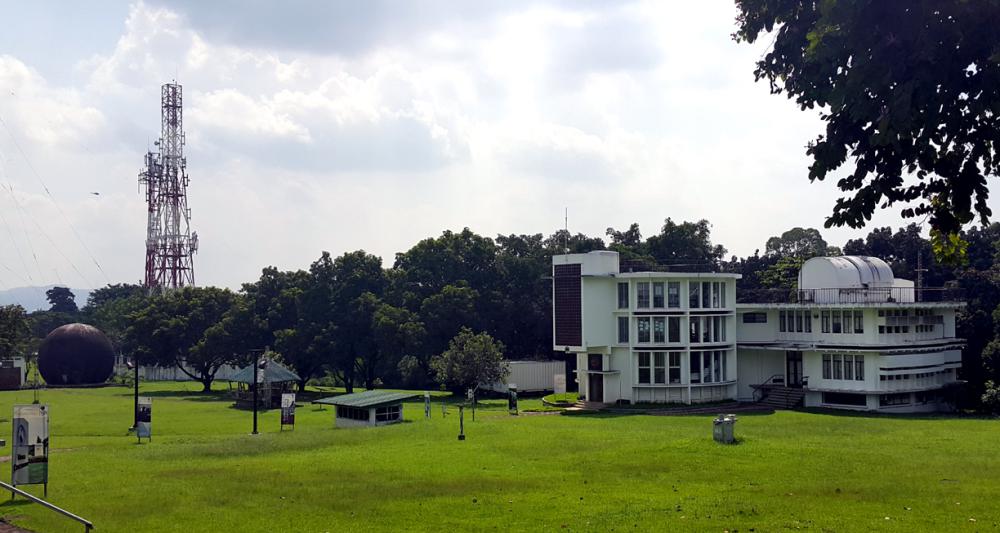
Fig. 6a. Manila Observatorio meteorological del Ateneo (1963), (Municipal de Manila)

Fig. 6b. Manila Observatorio meteorological del Ateneo (1962), (Wikipedia, CC4, Ramon F. Velasquez)
In 1962, a new Manila Observatory building was erected on Loyola heights near the campus of Ateneo de Manila University in Quezon City. The emphasis of research was seismology and sun-earth-relationsships (solar studies, ionospheric research, radio physics, geomagnetic studies).
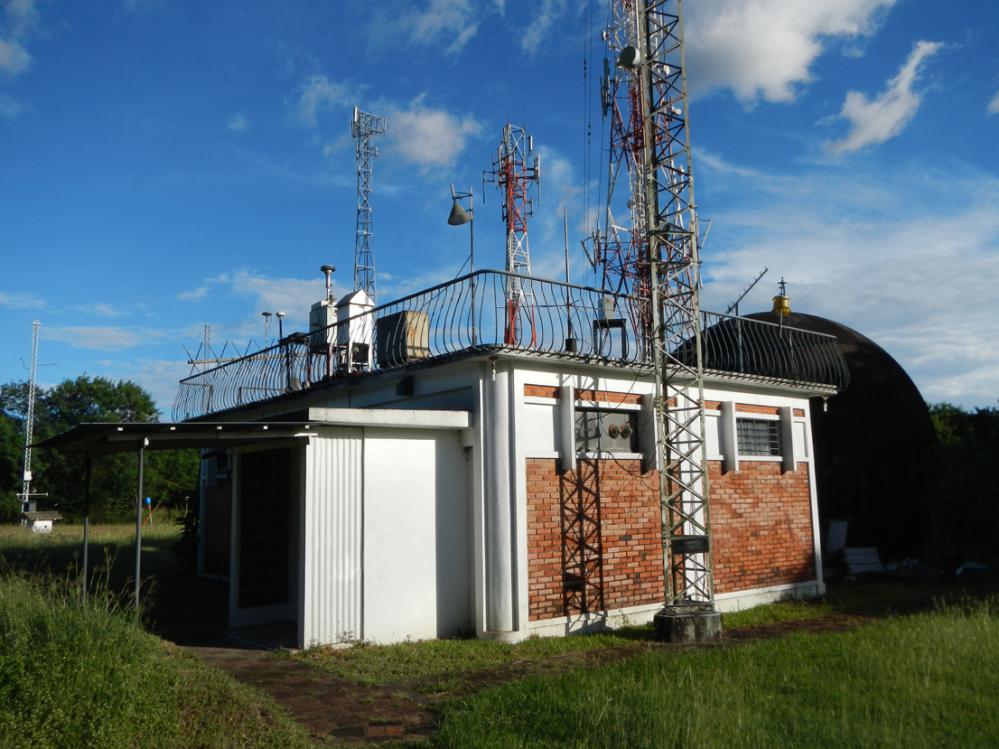
Fig. 7a. Manila Observatory Iono-Geomagnetic-study (Wikipedia, CC4, Ramon F. Velasquez)
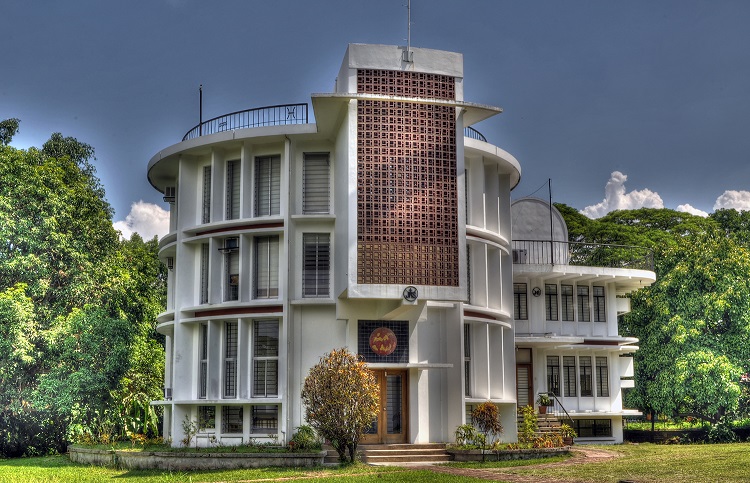
Fig. 7b. Manila Observatory, Ateneo de Manila University, Quezon City (www.observatory.ph)
References
Bibliography (books and published articles) - InfoTheme: Astronomy from the Renaissance to the mid-twentieth century
Entity: 187
Subentity: 1
Version: 4
Status: PUB
Date: 2022-12-03 03:52:20
Author(s): Gudrun Wolfschmidt
- Hennessy, James J.: The Manila Observatory. In: Philippine Studies, Vol. 8 (1960), No. 1, p. 99-120.
- Hidalgo, Angel: El P. Federico Faura, S.J. y el Observatorio de Manila. Manila: Observatorio de Manila 1974.
- Algué, José: Mirador observatory, Baguio, Benguet,
a new meteorological-geodynamic station of the Weather bureau. Manila: Bureau of printing 1909.
- Herbermann, Charles (Hg): Manila Observatory. Katholische Enzyklopädie. New York: Robert Appleton Company 1913.
- Hidalgo, Angel: El P. José Algué, S.J.: Científico, inventor y pacifista (1856--1930). Manila: Observatorio de Manila 1974.
- McCarthy, Martin F., S.J. & Jaylee M. Mead: Francis J. Heyden, S.J. (1907--1991). In: Bulletin of the AAS 24 (1992), Issue 4
- Schumacher, John N.: One Hundred Years of Jesuit Scientists: The Manila Observatory 1865--1965. In: Philippine Studies
Vol. 13 (1965), No. 2, p. 258-286.
- Udías, Agustín: "Jesuits’ Contribution to Meteorology." In: Bulletin of the American Meteorological Society 77 (October 1996), no. 10, 2307--2315.
- Udías, Agustin: Searching the Heavens and the Earth: The History of Jesuit Observatories. Dordrecht: Kluwer Academic 2013.
Links to external sites - InfoTheme: Astronomy from the Renaissance to the mid-twentieth century
Entity: 187
Subentity: 1
Version: 3
Status: PUB
Date: 2022-12-03 03:53:29
Author(s): Gudrun Wolfschmidt
- Manila Observatory -- History
- Bamm, Gabriana: Manila Observatory: A Stellar Legacy
- Manila Observatory (Wikipedia)
PrintPrint contents of 'Description' tab
(opens in a new window) Theme
Astronomy from the Renaissance to the mid-twentieth century
Case Study Navigation
- InfoTheme: Astronomy from the Renaissance to the mid-twentieth century
Entity: 187
Subentity: 1
Version: 3
Status: PUB
Date: 2022-12-03 03:45:50
Author(s): Gudrun Wolfschmidt
Manila (Jesuit) Observatory, Observatorio Meteorológico del Ateneo Municipal de Manila
- Mirador Observatory, Baguio, Benguet, Luzon, Philippines
- Modern Manila Observatory, Ateneo de Manila University in Quezon City, Metro Manila, Luzon, Philippines
Location - InfoTheme: Astronomy from the Renaissance to the mid-twentieth century
Entity: 187
Subentity: 1
Version: 2
Status: PUB
Date: 2021-04-21 06:28:25
Author(s): Gudrun Wolfschmidt
Latitude 14.63667°N, Longitude 121.07667°E, Elevation ...m above mean sea level.
IAU observatory code - InfoTheme: Astronomy from the Renaissance to the mid-twentieth century
Entity: 187
Subentity: 1
Version: 1
Status: PUB
Date: 2021-04-21 06:24:53
Author(s): Gudrun Wolfschmidt
-
Description of (scientific/cultural/natural) heritage - InfoTheme: Astronomy from the Renaissance to the mid-twentieth century
Entity: 187
Subentity: 1
Version: 3
Status: PUB
Date: 2022-12-03 03:46:51
Author(s): Gudrun Wolfschmidt

Fig. 1. Manila Observatory (1865), (Postcard)
Astronomy, timekeeping, solar observations, meteorology, terrestrial magnetism, and seismology played an important role in imperial expansion during the age of empire. After the suppression of the Society of Jesus (1773 to 1814) and the regeneration / restoration, Jesuit observatories were revived or newly erected in the 19th century, e.g. outposts of scientific excellence were established in the tropics, besides Manila (Philippines, est. 1865), <a href="https://www3.astronomicalheritage.net/index.php/show-entity?identity=188&idsubentity=1" target="_blank">Belén Observatoy at Havana</a> (Cuba, est. 1857), <a href="https://www3.astronomicalheritage.net/index.php/show-entity?identity=207&idsubentity=1" target="_blank">Zikawei Observatory in Shanghai</a> (China, est. 1872), and Tananarive (now Antananarivo, Madagascar, est. 1889).
The Manila Observatory was founded by the Society of Jesus (Jesuit Observatory), in 1865 as the "Observatorio Meteorológico del Ateneo Municipal de Manila", later renamed "Observatorio Meteorológico de Manila" -- one of the first observatories established in the Far East, earlier than Batavia (Jakarta), Indonesia, in 1866 and Tokyo in 1875.
Francisco Colina (1837--1893), a teacher of mathematics, began meteorological observations in the secondary school founded by the Spanish Jesuits in Manila, Philippines, in 1860. The main tasks of Manila Observatory are weather forecasting and earthquake research and today research in seismology and geomagnetism as well as radio and solar physics.
The next director Francisco Faura (1840--1897) from Spain, director from 1878 to 1897, started to acquire instruments, like the famous Secchi meteorograph (1869). Inspired by the earthquake of 1870 in Manila, Ricart constructed two pendulums, horizontal and vertical, which were helpful during the strong earthquake of 1872.
Faura observed with two young Jesuits, Juan Ricart (1838--1915) and Jaime Nonell (1844--1922) the solar eclipse of 1868 on Mantawalok, a small island of the Celebes archipelago; they met Utrecht astronomers. The results were sent to Madrid and to Secchi in Rome and were published in the Bulletin of the Observatory of the Collegio Romano. Then he travelled through Europe, to Spain in 1871 and to the Collegio Romano in 1877, to Stonyhurst, and he visited also observatories in Italy and met Italian seismologists. In 1879, Faura studied typhoons (called baguios in the Philippines). He successfully forecasted the serious typhoon of 1879 in Manila -- the first official storm warning in the Far East.
In 1887, the Meteorological Service was supplemented by official timekeeping, using a Time Ball at noon, followed by a cannon shot in the harbour of Manila. In addition, the observatory developed a system of visual signs in order to inform mariners of severe storm weather.

Fig. 2a. Manila Observatory (1865 to 1945), Padre-Faura-Street (Postcard)

Fig. 2b. Jesuit Optical Observatory in Manila-Ermita (Postcard)
A new observatory building was erected (1886) near to a new Jesuit school in the south of Manila. Now Faura had enough space for offices, library and a tower for meteorological instruments.

Fig. 2c. Mirador Observatory (1909), (Algué 1909, Pl-I)

Fig. 2d. Mirador Observatory (1909), (Algué 1909, PVl-I)
In addition, the Mirador Observatory with four towers was erected on Mirador (Mount Lookout, 132m), Baguio, Benguet, as a new meteorological-geodynamic station of the Weather Bureau (1909) (Algué 1909).
Timeline of development: In 1879 warnings of typhoons and in 1880 earthquake observations. In 1884, Manila Observatory as an official institution for weather forecasting in the Philippines recognized -- 1901 Philippine Meteorological Office.
Time service started in 1885, seismology in 1887 and astronomy in 1899.
The Manila Observatory was destroyed in 1945. After WWII, in 1962, a new Manila Observatory building was erected on Loyola heights near the campus of Ateneo de Manila University in Quezon City (Diliman in 1962). The emphasis of research was seismology and sun-earth-relationsships (solar studies, ionospheric research, radio physics, geomagnetic studies). Partners of Manila Observatory for research in environmental issues are PAGASA (Philippine Atmospheric Geophysical and Astronomical Services Administration), and PHIVOLCS (Philippine Institute of Volcanology and Seismology).
The old Mirador Observatory in Baguio, Benguet, was used as observing station for seismic and magnetic research, and a magnetic station in Davao -- close to the magnetic equator of the earth.
History - InfoTheme: Astronomy from the Renaissance to the mid-twentieth century
Entity: 187
Subentity: 1
Version: 4
Status: PUB
Date: 2022-12-03 03:48:36
Author(s): Gudrun Wolfschmidt

Fig. 3a. Secchi’s Meteorograph, Manila Observatory

Fig. 3b. Large Aneroid Barometer of Manila Observatory (Manila Observatory Archives)

Fig. 3c. Time keeping room with Transit Instrument in Manila Observatory (1926), (Manila Observatory Archives)
Instruments
- Meteorological Instruments
- Fauras Large "Aneroid Barometer" (1886)
- Sprung-Puess and Richard Barographs
- Thermographs
- Heliographs
- Thompson electrometer by Mascart
- Secchi Universal Meteorograph
- Elliot Magnetometer and Dover Inclinometer
- Horizontal Seismograph and a vertical pendulum for visual observation
- Meridian telescope, made by Dollond
- 4-inch refractor for sunspot imaging and analysis
- 19-inch-Refractor, made by Merz of Munich (1897)
- The 14-inch-lens of the Grubb telescope, made by Cauchoix in the 1830s for Edward J. Cooper of Markree Castle, Co. Sligo, a respectable private observatory in 19th century Ireland, survived in Manila; the telescope, sold to a Jesuit seminary in Hong Kong in the 1930s, was destroyed in World War II.
- Solar Spectrograph, developed by Richard A. Miller
- 12-inch Heliostat with Spectroheliograph, -scope with Lyot filter
- 10-inch Solar Telescope (1970s) for H-alpha flares, and Calcium images
- Solar Radio Telescope

Fig. 4a. 19-inch-telescope of Manila Observatory (1900), (Danilo Billones, 1939)

Fig. 4b. 19-inch-telescope of Manila Observatory (Manila Observatory Archives)

Fig. 5. Federico Faura (1840--1897), Director of Manila Observatory, 1878 to 1897
Directors
- Federico Faura (1840--1897), Director of Manila Observatory, (1866) 1878 to 1897 (MO).
- José Algué (1856--1925), Director of Manila Observatory, 1897 to 1925
- Miguel Selga, Director of Manila Observatory, 1926 to 1945 (MO), studied the speed, colour and rotation of Variable stars
- Charles E. Deppermann, Director of Manila Observatory, 1945 to 1957 (MO).
- Richard A. Miller, Chief Astronomer of Manila Observatory in Baguio, 1951, International Geophysical Year (1957), solar spectrograph
- James J. Hennessy, Director of Manila Observatory, 1957 to .... (MO),
Francis J. Heyden (1907--1991), retired from the Georgetown University Observatory, Chief Astronomer of Manila Observatory, 1972, Chief of the Solar Studies Division
State of preservation - InfoTheme: Astronomy from the Renaissance to the mid-twentieth century
Entity: 187
Subentity: 1
Version: 2
Status: PUB
Date: 2022-12-03 03:49:06
Author(s): Gudrun Wolfschmidt

Fig. 6. Ruins of Manila Observatory, 1945 (Manila Observatory Archives)
The original building of the Jesuit Observatory was destroyed in 1945.
Then, in 1962, a new building was erected for Manila Observatory
Comparison with related/similar sites - InfoTheme: Astronomy from the Renaissance to the mid-twentieth century
Entity: 187
Subentity: 1
Version: 3
Status: PUB
Date: 2022-12-03 03:53:11
Author(s): Gudrun Wolfschmidt
Outposts of scientific excellence were established in the tropics like Manila Jesuit Observatory (Philippines, est. 1865):
Belén Observatory in Havana (Cuba), Zikawei Observatory Shanghai, China (est. 1872), and Tananarive (now Antananarivo, Madagascar, magnetic observatory, est. 1889).
Present use - InfoTheme: Astronomy from the Renaissance to the mid-twentieth century
Entity: 187
Subentity: 1
Version: 2
Status: PUB
Date: 2022-12-03 03:51:05
Author(s): Gudrun Wolfschmidt
The Manila Observatory is mainly used for meteorology, seismology and sun-earth-relationsships.
Astronomical relevance today - InfoTheme: Astronomy from the Renaissance to the mid-twentieth century
Entity: 187
Subentity: 1
Version: 2
Status: PUB
Date: 2022-12-03 03:51:27
Author(s): Gudrun Wolfschmidt

Fig. 6a. Manila Observatorio meteorological del Ateneo (1963), (Municipal de Manila)

Fig. 6b. Manila Observatorio meteorological del Ateneo (1962), (Wikipedia, CC4, Ramon F. Velasquez)
In 1962, a new Manila Observatory building was erected on Loyola heights near the campus of Ateneo de Manila University in Quezon City. The emphasis of research was seismology and sun-earth-relationsships (solar studies, ionospheric research, radio physics, geomagnetic studies).

Fig. 7a. Manila Observatory Iono-Geomagnetic-study (Wikipedia, CC4, Ramon F. Velasquez)

Fig. 7b. Manila Observatory, Ateneo de Manila University, Quezon City (www.observatory.ph)
References
Bibliography (books and published articles) - InfoTheme: Astronomy from the Renaissance to the mid-twentieth century
Entity: 187
Subentity: 1
Version: 4
Status: PUB
Date: 2022-12-03 03:52:20
Author(s): Gudrun Wolfschmidt
- Hennessy, James J.: The Manila Observatory. In: Philippine Studies, Vol. 8 (1960), No. 1, p. 99-120.
- Hidalgo, Angel: El P. Federico Faura, S.J. y el Observatorio de Manila. Manila: Observatorio de Manila 1974.
- Algué, José: Mirador observatory, Baguio, Benguet,
a new meteorological-geodynamic station of the Weather bureau. Manila: Bureau of printing 1909.
- Herbermann, Charles (Hg): Manila Observatory. Katholische Enzyklopädie. New York: Robert Appleton Company 1913.
- Hidalgo, Angel: El P. José Algué, S.J.: Científico, inventor y pacifista (1856--1930). Manila: Observatorio de Manila 1974.
- McCarthy, Martin F., S.J. & Jaylee M. Mead: Francis J. Heyden, S.J. (1907--1991). In: Bulletin of the AAS 24 (1992), Issue 4
- Schumacher, John N.: One Hundred Years of Jesuit Scientists: The Manila Observatory 1865--1965. In: Philippine Studies
Vol. 13 (1965), No. 2, p. 258-286.
- Udías, Agustín: "Jesuits’ Contribution to Meteorology." In: Bulletin of the American Meteorological Society 77 (October 1996), no. 10, 2307--2315.
- Udías, Agustin: Searching the Heavens and the Earth: The History of Jesuit Observatories. Dordrecht: Kluwer Academic 2013.
Links to external sites - InfoTheme: Astronomy from the Renaissance to the mid-twentieth century
Entity: 187
Subentity: 1
Version: 3
Status: PUB
Date: 2022-12-03 03:53:29
Author(s): Gudrun Wolfschmidt
- Manila Observatory -- History
- Bamm, Gabriana: Manila Observatory: A Stellar Legacy
- Manila Observatory (Wikipedia)
PrintPrint contents of 'Description' tab
(opens in a new window) Theme
Astronomy from the Renaissance to the mid-twentieth century
Case Study Navigation
- InfoTheme: Astronomy from the Renaissance to the mid-twentieth century
Entity: 187
Subentity: 1
Version: 2
Status: PUB
Date: 2021-04-21 06:28:25
Author(s): Gudrun Wolfschmidt
Latitude 14.63667°N, Longitude 121.07667°E, Elevation ...m above mean sea level.
IAU observatory code - InfoTheme: Astronomy from the Renaissance to the mid-twentieth century
Entity: 187
Subentity: 1
Version: 1
Status: PUB
Date: 2021-04-21 06:24:53
Author(s): Gudrun Wolfschmidt
-
Description of (scientific/cultural/natural) heritage - InfoTheme: Astronomy from the Renaissance to the mid-twentieth century
Entity: 187
Subentity: 1
Version: 3
Status: PUB
Date: 2022-12-03 03:46:51
Author(s): Gudrun Wolfschmidt

Fig. 1. Manila Observatory (1865), (Postcard)
Astronomy, timekeeping, solar observations, meteorology, terrestrial magnetism, and seismology played an important role in imperial expansion during the age of empire. After the suppression of the Society of Jesus (1773 to 1814) and the regeneration / restoration, Jesuit observatories were revived or newly erected in the 19th century, e.g. outposts of scientific excellence were established in the tropics, besides Manila (Philippines, est. 1865), <a href="https://www3.astronomicalheritage.net/index.php/show-entity?identity=188&idsubentity=1" target="_blank">Belén Observatoy at Havana</a> (Cuba, est. 1857), <a href="https://www3.astronomicalheritage.net/index.php/show-entity?identity=207&idsubentity=1" target="_blank">Zikawei Observatory in Shanghai</a> (China, est. 1872), and Tananarive (now Antananarivo, Madagascar, est. 1889).
The Manila Observatory was founded by the Society of Jesus (Jesuit Observatory), in 1865 as the "Observatorio Meteorológico del Ateneo Municipal de Manila", later renamed "Observatorio Meteorológico de Manila" -- one of the first observatories established in the Far East, earlier than Batavia (Jakarta), Indonesia, in 1866 and Tokyo in 1875.
Francisco Colina (1837--1893), a teacher of mathematics, began meteorological observations in the secondary school founded by the Spanish Jesuits in Manila, Philippines, in 1860. The main tasks of Manila Observatory are weather forecasting and earthquake research and today research in seismology and geomagnetism as well as radio and solar physics.
The next director Francisco Faura (1840--1897) from Spain, director from 1878 to 1897, started to acquire instruments, like the famous Secchi meteorograph (1869). Inspired by the earthquake of 1870 in Manila, Ricart constructed two pendulums, horizontal and vertical, which were helpful during the strong earthquake of 1872.
Faura observed with two young Jesuits, Juan Ricart (1838--1915) and Jaime Nonell (1844--1922) the solar eclipse of 1868 on Mantawalok, a small island of the Celebes archipelago; they met Utrecht astronomers. The results were sent to Madrid and to Secchi in Rome and were published in the Bulletin of the Observatory of the Collegio Romano. Then he travelled through Europe, to Spain in 1871 and to the Collegio Romano in 1877, to Stonyhurst, and he visited also observatories in Italy and met Italian seismologists. In 1879, Faura studied typhoons (called baguios in the Philippines). He successfully forecasted the serious typhoon of 1879 in Manila -- the first official storm warning in the Far East.
In 1887, the Meteorological Service was supplemented by official timekeeping, using a Time Ball at noon, followed by a cannon shot in the harbour of Manila. In addition, the observatory developed a system of visual signs in order to inform mariners of severe storm weather.

Fig. 2a. Manila Observatory (1865 to 1945), Padre-Faura-Street (Postcard)

Fig. 2b. Jesuit Optical Observatory in Manila-Ermita (Postcard)
A new observatory building was erected (1886) near to a new Jesuit school in the south of Manila. Now Faura had enough space for offices, library and a tower for meteorological instruments.

Fig. 2c. Mirador Observatory (1909), (Algué 1909, Pl-I)

Fig. 2d. Mirador Observatory (1909), (Algué 1909, PVl-I)
In addition, the Mirador Observatory with four towers was erected on Mirador (Mount Lookout, 132m), Baguio, Benguet, as a new meteorological-geodynamic station of the Weather Bureau (1909) (Algué 1909).
Timeline of development: In 1879 warnings of typhoons and in 1880 earthquake observations. In 1884, Manila Observatory as an official institution for weather forecasting in the Philippines recognized -- 1901 Philippine Meteorological Office.
Time service started in 1885, seismology in 1887 and astronomy in 1899.
The Manila Observatory was destroyed in 1945. After WWII, in 1962, a new Manila Observatory building was erected on Loyola heights near the campus of Ateneo de Manila University in Quezon City (Diliman in 1962). The emphasis of research was seismology and sun-earth-relationsships (solar studies, ionospheric research, radio physics, geomagnetic studies). Partners of Manila Observatory for research in environmental issues are PAGASA (Philippine Atmospheric Geophysical and Astronomical Services Administration), and PHIVOLCS (Philippine Institute of Volcanology and Seismology).
The old Mirador Observatory in Baguio, Benguet, was used as observing station for seismic and magnetic research, and a magnetic station in Davao -- close to the magnetic equator of the earth.
History - InfoTheme: Astronomy from the Renaissance to the mid-twentieth century
Entity: 187
Subentity: 1
Version: 4
Status: PUB
Date: 2022-12-03 03:48:36
Author(s): Gudrun Wolfschmidt

Fig. 3a. Secchi’s Meteorograph, Manila Observatory

Fig. 3b. Large Aneroid Barometer of Manila Observatory (Manila Observatory Archives)

Fig. 3c. Time keeping room with Transit Instrument in Manila Observatory (1926), (Manila Observatory Archives)
Instruments
- Meteorological Instruments
- Fauras Large "Aneroid Barometer" (1886)
- Sprung-Puess and Richard Barographs
- Thermographs
- Heliographs
- Thompson electrometer by Mascart
- Secchi Universal Meteorograph
- Elliot Magnetometer and Dover Inclinometer
- Horizontal Seismograph and a vertical pendulum for visual observation
- Meridian telescope, made by Dollond
- 4-inch refractor for sunspot imaging and analysis
- 19-inch-Refractor, made by Merz of Munich (1897)
- The 14-inch-lens of the Grubb telescope, made by Cauchoix in the 1830s for Edward J. Cooper of Markree Castle, Co. Sligo, a respectable private observatory in 19th century Ireland, survived in Manila; the telescope, sold to a Jesuit seminary in Hong Kong in the 1930s, was destroyed in World War II.
- Solar Spectrograph, developed by Richard A. Miller
- 12-inch Heliostat with Spectroheliograph, -scope with Lyot filter
- 10-inch Solar Telescope (1970s) for H-alpha flares, and Calcium images
- Solar Radio Telescope

Fig. 4a. 19-inch-telescope of Manila Observatory (1900), (Danilo Billones, 1939)

Fig. 4b. 19-inch-telescope of Manila Observatory (Manila Observatory Archives)

Fig. 5. Federico Faura (1840--1897), Director of Manila Observatory, 1878 to 1897
Directors
- Federico Faura (1840--1897), Director of Manila Observatory, (1866) 1878 to 1897 (MO).
- José Algué (1856--1925), Director of Manila Observatory, 1897 to 1925
- Miguel Selga, Director of Manila Observatory, 1926 to 1945 (MO), studied the speed, colour and rotation of Variable stars
- Charles E. Deppermann, Director of Manila Observatory, 1945 to 1957 (MO).
- Richard A. Miller, Chief Astronomer of Manila Observatory in Baguio, 1951, International Geophysical Year (1957), solar spectrograph
- James J. Hennessy, Director of Manila Observatory, 1957 to .... (MO),
Francis J. Heyden (1907--1991), retired from the Georgetown University Observatory, Chief Astronomer of Manila Observatory, 1972, Chief of the Solar Studies Division
State of preservation - InfoTheme: Astronomy from the Renaissance to the mid-twentieth century
Entity: 187
Subentity: 1
Version: 2
Status: PUB
Date: 2022-12-03 03:49:06
Author(s): Gudrun Wolfschmidt

Fig. 6. Ruins of Manila Observatory, 1945 (Manila Observatory Archives)
The original building of the Jesuit Observatory was destroyed in 1945.
Then, in 1962, a new building was erected for Manila Observatory
Comparison with related/similar sites - InfoTheme: Astronomy from the Renaissance to the mid-twentieth century
Entity: 187
Subentity: 1
Version: 3
Status: PUB
Date: 2022-12-03 03:53:11
Author(s): Gudrun Wolfschmidt
Outposts of scientific excellence were established in the tropics like Manila Jesuit Observatory (Philippines, est. 1865):
Belén Observatory in Havana (Cuba), Zikawei Observatory Shanghai, China (est. 1872), and Tananarive (now Antananarivo, Madagascar, magnetic observatory, est. 1889).
Present use - InfoTheme: Astronomy from the Renaissance to the mid-twentieth century
Entity: 187
Subentity: 1
Version: 2
Status: PUB
Date: 2022-12-03 03:51:05
Author(s): Gudrun Wolfschmidt
The Manila Observatory is mainly used for meteorology, seismology and sun-earth-relationsships.
Astronomical relevance today - InfoTheme: Astronomy from the Renaissance to the mid-twentieth century
Entity: 187
Subentity: 1
Version: 2
Status: PUB
Date: 2022-12-03 03:51:27
Author(s): Gudrun Wolfschmidt

Fig. 6a. Manila Observatorio meteorological del Ateneo (1963), (Municipal de Manila)

Fig. 6b. Manila Observatorio meteorological del Ateneo (1962), (Wikipedia, CC4, Ramon F. Velasquez)
In 1962, a new Manila Observatory building was erected on Loyola heights near the campus of Ateneo de Manila University in Quezon City. The emphasis of research was seismology and sun-earth-relationsships (solar studies, ionospheric research, radio physics, geomagnetic studies).

Fig. 7a. Manila Observatory Iono-Geomagnetic-study (Wikipedia, CC4, Ramon F. Velasquez)

Fig. 7b. Manila Observatory, Ateneo de Manila University, Quezon City (www.observatory.ph)
References
Bibliography (books and published articles) - InfoTheme: Astronomy from the Renaissance to the mid-twentieth century
Entity: 187
Subentity: 1
Version: 4
Status: PUB
Date: 2022-12-03 03:52:20
Author(s): Gudrun Wolfschmidt
- Hennessy, James J.: The Manila Observatory. In: Philippine Studies, Vol. 8 (1960), No. 1, p. 99-120.
- Hidalgo, Angel: El P. Federico Faura, S.J. y el Observatorio de Manila. Manila: Observatorio de Manila 1974.
- Algué, José: Mirador observatory, Baguio, Benguet,
a new meteorological-geodynamic station of the Weather bureau. Manila: Bureau of printing 1909.
- Herbermann, Charles (Hg): Manila Observatory. Katholische Enzyklopädie. New York: Robert Appleton Company 1913.
- Hidalgo, Angel: El P. José Algué, S.J.: Científico, inventor y pacifista (1856--1930). Manila: Observatorio de Manila 1974.
- McCarthy, Martin F., S.J. & Jaylee M. Mead: Francis J. Heyden, S.J. (1907--1991). In: Bulletin of the AAS 24 (1992), Issue 4
- Schumacher, John N.: One Hundred Years of Jesuit Scientists: The Manila Observatory 1865--1965. In: Philippine Studies
Vol. 13 (1965), No. 2, p. 258-286.
- Udías, Agustín: "Jesuits’ Contribution to Meteorology." In: Bulletin of the American Meteorological Society 77 (October 1996), no. 10, 2307--2315.
- Udías, Agustin: Searching the Heavens and the Earth: The History of Jesuit Observatories. Dordrecht: Kluwer Academic 2013.
Links to external sites - InfoTheme: Astronomy from the Renaissance to the mid-twentieth century
Entity: 187
Subentity: 1
Version: 3
Status: PUB
Date: 2022-12-03 03:53:29
Author(s): Gudrun Wolfschmidt
- Manila Observatory -- History
- Bamm, Gabriana: Manila Observatory: A Stellar Legacy
- Manila Observatory (Wikipedia)
PrintPrint contents of 'Description' tab
(opens in a new window) Theme
Astronomy from the Renaissance to the mid-twentieth century
Case Study Navigation
- InfoTheme: Astronomy from the Renaissance to the mid-twentieth century
Entity: 187
Subentity: 1
Version: 1
Status: PUB
Date: 2021-04-21 06:24:53
Author(s): Gudrun Wolfschmidt
-
Description of (scientific/cultural/natural) heritage - InfoTheme: Astronomy from the Renaissance to the mid-twentieth century
Entity: 187
Subentity: 1
Version: 3
Status: PUB
Date: 2022-12-03 03:46:51
Author(s): Gudrun Wolfschmidt

Fig. 1. Manila Observatory (1865), (Postcard)
Astronomy, timekeeping, solar observations, meteorology, terrestrial magnetism, and seismology played an important role in imperial expansion during the age of empire. After the suppression of the Society of Jesus (1773 to 1814) and the regeneration / restoration, Jesuit observatories were revived or newly erected in the 19th century, e.g. outposts of scientific excellence were established in the tropics, besides Manila (Philippines, est. 1865), <a href="https://www3.astronomicalheritage.net/index.php/show-entity?identity=188&idsubentity=1" target="_blank">Belén Observatoy at Havana</a> (Cuba, est. 1857), <a href="https://www3.astronomicalheritage.net/index.php/show-entity?identity=207&idsubentity=1" target="_blank">Zikawei Observatory in Shanghai</a> (China, est. 1872), and Tananarive (now Antananarivo, Madagascar, est. 1889).
The Manila Observatory was founded by the Society of Jesus (Jesuit Observatory), in 1865 as the "Observatorio Meteorológico del Ateneo Municipal de Manila", later renamed "Observatorio Meteorológico de Manila" -- one of the first observatories established in the Far East, earlier than Batavia (Jakarta), Indonesia, in 1866 and Tokyo in 1875.
Francisco Colina (1837--1893), a teacher of mathematics, began meteorological observations in the secondary school founded by the Spanish Jesuits in Manila, Philippines, in 1860. The main tasks of Manila Observatory are weather forecasting and earthquake research and today research in seismology and geomagnetism as well as radio and solar physics.
The next director Francisco Faura (1840--1897) from Spain, director from 1878 to 1897, started to acquire instruments, like the famous Secchi meteorograph (1869). Inspired by the earthquake of 1870 in Manila, Ricart constructed two pendulums, horizontal and vertical, which were helpful during the strong earthquake of 1872.
Faura observed with two young Jesuits, Juan Ricart (1838--1915) and Jaime Nonell (1844--1922) the solar eclipse of 1868 on Mantawalok, a small island of the Celebes archipelago; they met Utrecht astronomers. The results were sent to Madrid and to Secchi in Rome and were published in the Bulletin of the Observatory of the Collegio Romano. Then he travelled through Europe, to Spain in 1871 and to the Collegio Romano in 1877, to Stonyhurst, and he visited also observatories in Italy and met Italian seismologists. In 1879, Faura studied typhoons (called baguios in the Philippines). He successfully forecasted the serious typhoon of 1879 in Manila -- the first official storm warning in the Far East.
In 1887, the Meteorological Service was supplemented by official timekeeping, using a Time Ball at noon, followed by a cannon shot in the harbour of Manila. In addition, the observatory developed a system of visual signs in order to inform mariners of severe storm weather.

Fig. 2a. Manila Observatory (1865 to 1945), Padre-Faura-Street (Postcard)

Fig. 2b. Jesuit Optical Observatory in Manila-Ermita (Postcard)
A new observatory building was erected (1886) near to a new Jesuit school in the south of Manila. Now Faura had enough space for offices, library and a tower for meteorological instruments.

Fig. 2c. Mirador Observatory (1909), (Algué 1909, Pl-I)

Fig. 2d. Mirador Observatory (1909), (Algué 1909, PVl-I)
In addition, the Mirador Observatory with four towers was erected on Mirador (Mount Lookout, 132m), Baguio, Benguet, as a new meteorological-geodynamic station of the Weather Bureau (1909) (Algué 1909).
Timeline of development: In 1879 warnings of typhoons and in 1880 earthquake observations. In 1884, Manila Observatory as an official institution for weather forecasting in the Philippines recognized -- 1901 Philippine Meteorological Office.
Time service started in 1885, seismology in 1887 and astronomy in 1899.
The Manila Observatory was destroyed in 1945. After WWII, in 1962, a new Manila Observatory building was erected on Loyola heights near the campus of Ateneo de Manila University in Quezon City (Diliman in 1962). The emphasis of research was seismology and sun-earth-relationsships (solar studies, ionospheric research, radio physics, geomagnetic studies). Partners of Manila Observatory for research in environmental issues are PAGASA (Philippine Atmospheric Geophysical and Astronomical Services Administration), and PHIVOLCS (Philippine Institute of Volcanology and Seismology).
The old Mirador Observatory in Baguio, Benguet, was used as observing station for seismic and magnetic research, and a magnetic station in Davao -- close to the magnetic equator of the earth.
History - InfoTheme: Astronomy from the Renaissance to the mid-twentieth century
Entity: 187
Subentity: 1
Version: 4
Status: PUB
Date: 2022-12-03 03:48:36
Author(s): Gudrun Wolfschmidt

Fig. 3a. Secchi’s Meteorograph, Manila Observatory

Fig. 3b. Large Aneroid Barometer of Manila Observatory (Manila Observatory Archives)

Fig. 3c. Time keeping room with Transit Instrument in Manila Observatory (1926), (Manila Observatory Archives)
Instruments
- Meteorological Instruments
- Fauras Large "Aneroid Barometer" (1886)
- Sprung-Puess and Richard Barographs
- Thermographs
- Heliographs
- Thompson electrometer by Mascart
- Secchi Universal Meteorograph
- Elliot Magnetometer and Dover Inclinometer
- Horizontal Seismograph and a vertical pendulum for visual observation
- Meridian telescope, made by Dollond
- 4-inch refractor for sunspot imaging and analysis
- 19-inch-Refractor, made by Merz of Munich (1897)
- The 14-inch-lens of the Grubb telescope, made by Cauchoix in the 1830s for Edward J. Cooper of Markree Castle, Co. Sligo, a respectable private observatory in 19th century Ireland, survived in Manila; the telescope, sold to a Jesuit seminary in Hong Kong in the 1930s, was destroyed in World War II.
- Solar Spectrograph, developed by Richard A. Miller
- 12-inch Heliostat with Spectroheliograph, -scope with Lyot filter
- 10-inch Solar Telescope (1970s) for H-alpha flares, and Calcium images
- Solar Radio Telescope

Fig. 4a. 19-inch-telescope of Manila Observatory (1900), (Danilo Billones, 1939)

Fig. 4b. 19-inch-telescope of Manila Observatory (Manila Observatory Archives)

Fig. 5. Federico Faura (1840--1897), Director of Manila Observatory, 1878 to 1897
Directors
- Federico Faura (1840--1897), Director of Manila Observatory, (1866) 1878 to 1897 (MO).
- José Algué (1856--1925), Director of Manila Observatory, 1897 to 1925
- Miguel Selga, Director of Manila Observatory, 1926 to 1945 (MO), studied the speed, colour and rotation of Variable stars
- Charles E. Deppermann, Director of Manila Observatory, 1945 to 1957 (MO).
- Richard A. Miller, Chief Astronomer of Manila Observatory in Baguio, 1951, International Geophysical Year (1957), solar spectrograph
- James J. Hennessy, Director of Manila Observatory, 1957 to .... (MO),
Francis J. Heyden (1907--1991), retired from the Georgetown University Observatory, Chief Astronomer of Manila Observatory, 1972, Chief of the Solar Studies Division
State of preservation - InfoTheme: Astronomy from the Renaissance to the mid-twentieth century
Entity: 187
Subentity: 1
Version: 2
Status: PUB
Date: 2022-12-03 03:49:06
Author(s): Gudrun Wolfschmidt

Fig. 6. Ruins of Manila Observatory, 1945 (Manila Observatory Archives)
The original building of the Jesuit Observatory was destroyed in 1945.
Then, in 1962, a new building was erected for Manila Observatory
Comparison with related/similar sites - InfoTheme: Astronomy from the Renaissance to the mid-twentieth century
Entity: 187
Subentity: 1
Version: 3
Status: PUB
Date: 2022-12-03 03:53:11
Author(s): Gudrun Wolfschmidt
Outposts of scientific excellence were established in the tropics like Manila Jesuit Observatory (Philippines, est. 1865):
Belén Observatory in Havana (Cuba), Zikawei Observatory Shanghai, China (est. 1872), and Tananarive (now Antananarivo, Madagascar, magnetic observatory, est. 1889).
Present use - InfoTheme: Astronomy from the Renaissance to the mid-twentieth century
Entity: 187
Subentity: 1
Version: 2
Status: PUB
Date: 2022-12-03 03:51:05
Author(s): Gudrun Wolfschmidt
The Manila Observatory is mainly used for meteorology, seismology and sun-earth-relationsships.
Astronomical relevance today - InfoTheme: Astronomy from the Renaissance to the mid-twentieth century
Entity: 187
Subentity: 1
Version: 2
Status: PUB
Date: 2022-12-03 03:51:27
Author(s): Gudrun Wolfschmidt

Fig. 6a. Manila Observatorio meteorological del Ateneo (1963), (Municipal de Manila)

Fig. 6b. Manila Observatorio meteorological del Ateneo (1962), (Wikipedia, CC4, Ramon F. Velasquez)
In 1962, a new Manila Observatory building was erected on Loyola heights near the campus of Ateneo de Manila University in Quezon City. The emphasis of research was seismology and sun-earth-relationsships (solar studies, ionospheric research, radio physics, geomagnetic studies).

Fig. 7a. Manila Observatory Iono-Geomagnetic-study (Wikipedia, CC4, Ramon F. Velasquez)

Fig. 7b. Manila Observatory, Ateneo de Manila University, Quezon City (www.observatory.ph)
References
Bibliography (books and published articles) - InfoTheme: Astronomy from the Renaissance to the mid-twentieth century
Entity: 187
Subentity: 1
Version: 4
Status: PUB
Date: 2022-12-03 03:52:20
Author(s): Gudrun Wolfschmidt
- Hennessy, James J.: The Manila Observatory. In: Philippine Studies, Vol. 8 (1960), No. 1, p. 99-120.
- Hidalgo, Angel: El P. Federico Faura, S.J. y el Observatorio de Manila. Manila: Observatorio de Manila 1974.
- Algué, José: Mirador observatory, Baguio, Benguet,
a new meteorological-geodynamic station of the Weather bureau. Manila: Bureau of printing 1909.
- Herbermann, Charles (Hg): Manila Observatory. Katholische Enzyklopädie. New York: Robert Appleton Company 1913.
- Hidalgo, Angel: El P. José Algué, S.J.: Científico, inventor y pacifista (1856--1930). Manila: Observatorio de Manila 1974.
- McCarthy, Martin F., S.J. & Jaylee M. Mead: Francis J. Heyden, S.J. (1907--1991). In: Bulletin of the AAS 24 (1992), Issue 4
- Schumacher, John N.: One Hundred Years of Jesuit Scientists: The Manila Observatory 1865--1965. In: Philippine Studies
Vol. 13 (1965), No. 2, p. 258-286.
- Udías, Agustín: "Jesuits’ Contribution to Meteorology." In: Bulletin of the American Meteorological Society 77 (October 1996), no. 10, 2307--2315.
- Udías, Agustin: Searching the Heavens and the Earth: The History of Jesuit Observatories. Dordrecht: Kluwer Academic 2013.
Links to external sites - InfoTheme: Astronomy from the Renaissance to the mid-twentieth century
Entity: 187
Subentity: 1
Version: 3
Status: PUB
Date: 2022-12-03 03:53:29
Author(s): Gudrun Wolfschmidt
- Manila Observatory -- History
- Bamm, Gabriana: Manila Observatory: A Stellar Legacy
- Manila Observatory (Wikipedia)
PrintPrint contents of 'Description' tab
(opens in a new window) Theme
Astronomy from the Renaissance to the mid-twentieth century
Case Study Navigation
- InfoTheme: Astronomy from the Renaissance to the mid-twentieth century
Entity: 187
Subentity: 1
Version: 3
Status: PUB
Date: 2022-12-03 03:46:51
Author(s): Gudrun Wolfschmidt

Fig. 1. Manila Observatory (1865), (Postcard)
Astronomy, timekeeping, solar observations, meteorology, terrestrial magnetism, and seismology played an important role in imperial expansion during the age of empire. After the suppression of the Society of Jesus (1773 to 1814) and the regeneration / restoration, Jesuit observatories were revived or newly erected in the 19th century, e.g. outposts of scientific excellence were established in the tropics, besides Manila (Philippines, est. 1865), <a href="https://www3.astronomicalheritage.net/index.php/show-entity?identity=188&idsubentity=1" target="_blank">Belén Observatoy at Havana</a> (Cuba, est. 1857), <a href="https://www3.astronomicalheritage.net/index.php/show-entity?identity=207&idsubentity=1" target="_blank">Zikawei Observatory in Shanghai</a> (China, est. 1872), and Tananarive (now Antananarivo, Madagascar, est. 1889).
The Manila Observatory was founded by the Society of Jesus (Jesuit Observatory), in 1865 as the "Observatorio Meteorológico del Ateneo Municipal de Manila", later renamed "Observatorio Meteorológico de Manila" -- one of the first observatories established in the Far East, earlier than Batavia (Jakarta), Indonesia, in 1866 and Tokyo in 1875.
Francisco Colina (1837--1893), a teacher of mathematics, began meteorological observations in the secondary school founded by the Spanish Jesuits in Manila, Philippines, in 1860. The main tasks of Manila Observatory are weather forecasting and earthquake research and today research in seismology and geomagnetism as well as radio and solar physics.
The next director Francisco Faura (1840--1897) from Spain, director from 1878 to 1897, started to acquire instruments, like the famous Secchi meteorograph (1869). Inspired by the earthquake of 1870 in Manila, Ricart constructed two pendulums, horizontal and vertical, which were helpful during the strong earthquake of 1872.
Faura observed with two young Jesuits, Juan Ricart (1838--1915) and Jaime Nonell (1844--1922) the solar eclipse of 1868 on Mantawalok, a small island of the Celebes archipelago; they met Utrecht astronomers. The results were sent to Madrid and to Secchi in Rome and were published in the Bulletin of the Observatory of the Collegio Romano. Then he travelled through Europe, to Spain in 1871 and to the Collegio Romano in 1877, to Stonyhurst, and he visited also observatories in Italy and met Italian seismologists. In 1879, Faura studied typhoons (called baguios in the Philippines). He successfully forecasted the serious typhoon of 1879 in Manila -- the first official storm warning in the Far East.
In 1887, the Meteorological Service was supplemented by official timekeeping, using a Time Ball at noon, followed by a cannon shot in the harbour of Manila. In addition, the observatory developed a system of visual signs in order to inform mariners of severe storm weather.

Fig. 2a. Manila Observatory (1865 to 1945), Padre-Faura-Street (Postcard)

Fig. 2b. Jesuit Optical Observatory in Manila-Ermita (Postcard)
A new observatory building was erected (1886) near to a new Jesuit school in the south of Manila. Now Faura had enough space for offices, library and a tower for meteorological instruments.

Fig. 2c. Mirador Observatory (1909), (Algué 1909, Pl-I)

Fig. 2d. Mirador Observatory (1909), (Algué 1909, PVl-I)
In addition, the Mirador Observatory with four towers was erected on Mirador (Mount Lookout, 132m), Baguio, Benguet, as a new meteorological-geodynamic station of the Weather Bureau (1909) (Algué 1909).
Timeline of development: In 1879 warnings of typhoons and in 1880 earthquake observations. In 1884, Manila Observatory as an official institution for weather forecasting in the Philippines recognized -- 1901 Philippine Meteorological Office.
Time service started in 1885, seismology in 1887 and astronomy in 1899.
The Manila Observatory was destroyed in 1945. After WWII, in 1962, a new Manila Observatory building was erected on Loyola heights near the campus of Ateneo de Manila University in Quezon City (Diliman in 1962). The emphasis of research was seismology and sun-earth-relationsships (solar studies, ionospheric research, radio physics, geomagnetic studies). Partners of Manila Observatory for research in environmental issues are PAGASA (Philippine Atmospheric Geophysical and Astronomical Services Administration), and PHIVOLCS (Philippine Institute of Volcanology and Seismology).
The old Mirador Observatory in Baguio, Benguet, was used as observing station for seismic and magnetic research, and a magnetic station in Davao -- close to the magnetic equator of the earth.
History - InfoTheme: Astronomy from the Renaissance to the mid-twentieth century
Entity: 187
Subentity: 1
Version: 4
Status: PUB
Date: 2022-12-03 03:48:36
Author(s): Gudrun Wolfschmidt

Fig. 3a. Secchi’s Meteorograph, Manila Observatory

Fig. 3b. Large Aneroid Barometer of Manila Observatory (Manila Observatory Archives)

Fig. 3c. Time keeping room with Transit Instrument in Manila Observatory (1926), (Manila Observatory Archives)
Instruments
- Meteorological Instruments
- Fauras Large "Aneroid Barometer" (1886)
- Sprung-Puess and Richard Barographs
- Thermographs
- Heliographs
- Thompson electrometer by Mascart
- Secchi Universal Meteorograph
- Elliot Magnetometer and Dover Inclinometer
- Horizontal Seismograph and a vertical pendulum for visual observation
- Meridian telescope, made by Dollond
- 4-inch refractor for sunspot imaging and analysis
- 19-inch-Refractor, made by Merz of Munich (1897)
- The 14-inch-lens of the Grubb telescope, made by Cauchoix in the 1830s for Edward J. Cooper of Markree Castle, Co. Sligo, a respectable private observatory in 19th century Ireland, survived in Manila; the telescope, sold to a Jesuit seminary in Hong Kong in the 1930s, was destroyed in World War II.
- Solar Spectrograph, developed by Richard A. Miller
- 12-inch Heliostat with Spectroheliograph, -scope with Lyot filter
- 10-inch Solar Telescope (1970s) for H-alpha flares, and Calcium images
- Solar Radio Telescope

Fig. 4a. 19-inch-telescope of Manila Observatory (1900), (Danilo Billones, 1939)

Fig. 4b. 19-inch-telescope of Manila Observatory (Manila Observatory Archives)

Fig. 5. Federico Faura (1840--1897), Director of Manila Observatory, 1878 to 1897
Directors
- Federico Faura (1840--1897), Director of Manila Observatory, (1866) 1878 to 1897 (MO).
- José Algué (1856--1925), Director of Manila Observatory, 1897 to 1925
- Miguel Selga, Director of Manila Observatory, 1926 to 1945 (MO), studied the speed, colour and rotation of Variable stars
- Charles E. Deppermann, Director of Manila Observatory, 1945 to 1957 (MO).
- Richard A. Miller, Chief Astronomer of Manila Observatory in Baguio, 1951, International Geophysical Year (1957), solar spectrograph
- James J. Hennessy, Director of Manila Observatory, 1957 to .... (MO),
Francis J. Heyden (1907--1991), retired from the Georgetown University Observatory, Chief Astronomer of Manila Observatory, 1972, Chief of the Solar Studies Division
State of preservation - InfoTheme: Astronomy from the Renaissance to the mid-twentieth century
Entity: 187
Subentity: 1
Version: 2
Status: PUB
Date: 2022-12-03 03:49:06
Author(s): Gudrun Wolfschmidt

Fig. 6. Ruins of Manila Observatory, 1945 (Manila Observatory Archives)
The original building of the Jesuit Observatory was destroyed in 1945.
Then, in 1962, a new building was erected for Manila Observatory
Comparison with related/similar sites - InfoTheme: Astronomy from the Renaissance to the mid-twentieth century
Entity: 187
Subentity: 1
Version: 3
Status: PUB
Date: 2022-12-03 03:53:11
Author(s): Gudrun Wolfschmidt
Outposts of scientific excellence were established in the tropics like Manila Jesuit Observatory (Philippines, est. 1865):
Belén Observatory in Havana (Cuba), Zikawei Observatory Shanghai, China (est. 1872), and Tananarive (now Antananarivo, Madagascar, magnetic observatory, est. 1889).
Present use - InfoTheme: Astronomy from the Renaissance to the mid-twentieth century
Entity: 187
Subentity: 1
Version: 2
Status: PUB
Date: 2022-12-03 03:51:05
Author(s): Gudrun Wolfschmidt
The Manila Observatory is mainly used for meteorology, seismology and sun-earth-relationsships.
Astronomical relevance today - InfoTheme: Astronomy from the Renaissance to the mid-twentieth century
Entity: 187
Subentity: 1
Version: 2
Status: PUB
Date: 2022-12-03 03:51:27
Author(s): Gudrun Wolfschmidt

Fig. 6a. Manila Observatorio meteorological del Ateneo (1963), (Municipal de Manila)

Fig. 6b. Manila Observatorio meteorological del Ateneo (1962), (Wikipedia, CC4, Ramon F. Velasquez)
In 1962, a new Manila Observatory building was erected on Loyola heights near the campus of Ateneo de Manila University in Quezon City. The emphasis of research was seismology and sun-earth-relationsships (solar studies, ionospheric research, radio physics, geomagnetic studies).

Fig. 7a. Manila Observatory Iono-Geomagnetic-study (Wikipedia, CC4, Ramon F. Velasquez)

Fig. 7b. Manila Observatory, Ateneo de Manila University, Quezon City (www.observatory.ph)
References
Bibliography (books and published articles) - InfoTheme: Astronomy from the Renaissance to the mid-twentieth century
Entity: 187
Subentity: 1
Version: 4
Status: PUB
Date: 2022-12-03 03:52:20
Author(s): Gudrun Wolfschmidt
- Hennessy, James J.: The Manila Observatory. In: Philippine Studies, Vol. 8 (1960), No. 1, p. 99-120.
- Hidalgo, Angel: El P. Federico Faura, S.J. y el Observatorio de Manila. Manila: Observatorio de Manila 1974.
- Algué, José: Mirador observatory, Baguio, Benguet,
a new meteorological-geodynamic station of the Weather bureau. Manila: Bureau of printing 1909.
- Herbermann, Charles (Hg): Manila Observatory. Katholische Enzyklopädie. New York: Robert Appleton Company 1913.
- Hidalgo, Angel: El P. José Algué, S.J.: Científico, inventor y pacifista (1856--1930). Manila: Observatorio de Manila 1974.
- McCarthy, Martin F., S.J. & Jaylee M. Mead: Francis J. Heyden, S.J. (1907--1991). In: Bulletin of the AAS 24 (1992), Issue 4
- Schumacher, John N.: One Hundred Years of Jesuit Scientists: The Manila Observatory 1865--1965. In: Philippine Studies
Vol. 13 (1965), No. 2, p. 258-286.
- Udías, Agustín: "Jesuits’ Contribution to Meteorology." In: Bulletin of the American Meteorological Society 77 (October 1996), no. 10, 2307--2315.
- Udías, Agustin: Searching the Heavens and the Earth: The History of Jesuit Observatories. Dordrecht: Kluwer Academic 2013.
Links to external sites - InfoTheme: Astronomy from the Renaissance to the mid-twentieth century
Entity: 187
Subentity: 1
Version: 3
Status: PUB
Date: 2022-12-03 03:53:29
Author(s): Gudrun Wolfschmidt
- Manila Observatory -- History
- Bamm, Gabriana: Manila Observatory: A Stellar Legacy
- Manila Observatory (Wikipedia)
PrintPrint contents of 'Description' tab
(opens in a new window) Theme
Astronomy from the Renaissance to the mid-twentieth century
Case Study Navigation
- InfoTheme: Astronomy from the Renaissance to the mid-twentieth century
Entity: 187
Subentity: 1
Version: 4
Status: PUB
Date: 2022-12-03 03:48:36
Author(s): Gudrun Wolfschmidt

Fig. 3a. Secchi’s Meteorograph, Manila Observatory

Fig. 3b. Large Aneroid Barometer of Manila Observatory (Manila Observatory Archives)

Fig. 3c. Time keeping room with Transit Instrument in Manila Observatory (1926), (Manila Observatory Archives)
Instruments
- Meteorological Instruments
- Fauras Large "Aneroid Barometer" (1886)
- Sprung-Puess and Richard Barographs
- Thermographs
- Heliographs
- Thompson electrometer by Mascart
- Secchi Universal Meteorograph
- Elliot Magnetometer and Dover Inclinometer
- Horizontal Seismograph and a vertical pendulum for visual observation
- Meridian telescope, made by Dollond
- 4-inch refractor for sunspot imaging and analysis
- 19-inch-Refractor, made by Merz of Munich (1897)
- The 14-inch-lens of the Grubb telescope, made by Cauchoix in the 1830s for Edward J. Cooper of Markree Castle, Co. Sligo, a respectable private observatory in 19th century Ireland, survived in Manila; the telescope, sold to a Jesuit seminary in Hong Kong in the 1930s, was destroyed in World War II.
- Solar Spectrograph, developed by Richard A. Miller
- 12-inch Heliostat with Spectroheliograph, -scope with Lyot filter
- 10-inch Solar Telescope (1970s) for H-alpha flares, and Calcium images
- Solar Radio Telescope

Fig. 4a. 19-inch-telescope of Manila Observatory (1900), (Danilo Billones, 1939)

Fig. 4b. 19-inch-telescope of Manila Observatory (Manila Observatory Archives)

Fig. 5. Federico Faura (1840--1897), Director of Manila Observatory, 1878 to 1897
Directors
- Federico Faura (1840--1897), Director of Manila Observatory, (1866) 1878 to 1897 (MO).
- José Algué (1856--1925), Director of Manila Observatory, 1897 to 1925
- Miguel Selga, Director of Manila Observatory, 1926 to 1945 (MO), studied the speed, colour and rotation of Variable stars
- Charles E. Deppermann, Director of Manila Observatory, 1945 to 1957 (MO).
- Richard A. Miller, Chief Astronomer of Manila Observatory in Baguio, 1951, International Geophysical Year (1957), solar spectrograph
- James J. Hennessy, Director of Manila Observatory, 1957 to .... (MO),
Francis J. Heyden (1907--1991), retired from the Georgetown University Observatory, Chief Astronomer of Manila Observatory, 1972, Chief of the Solar Studies Division
State of preservation - InfoTheme: Astronomy from the Renaissance to the mid-twentieth century
Entity: 187
Subentity: 1
Version: 2
Status: PUB
Date: 2022-12-03 03:49:06
Author(s): Gudrun Wolfschmidt

Fig. 6. Ruins of Manila Observatory, 1945 (Manila Observatory Archives)
The original building of the Jesuit Observatory was destroyed in 1945.
Then, in 1962, a new building was erected for Manila Observatory
Comparison with related/similar sites - InfoTheme: Astronomy from the Renaissance to the mid-twentieth century
Entity: 187
Subentity: 1
Version: 3
Status: PUB
Date: 2022-12-03 03:53:11
Author(s): Gudrun Wolfschmidt
Outposts of scientific excellence were established in the tropics like Manila Jesuit Observatory (Philippines, est. 1865):
Belén Observatory in Havana (Cuba), Zikawei Observatory Shanghai, China (est. 1872), and Tananarive (now Antananarivo, Madagascar, magnetic observatory, est. 1889).
Present use - InfoTheme: Astronomy from the Renaissance to the mid-twentieth century
Entity: 187
Subentity: 1
Version: 2
Status: PUB
Date: 2022-12-03 03:51:05
Author(s): Gudrun Wolfschmidt
The Manila Observatory is mainly used for meteorology, seismology and sun-earth-relationsships.
Astronomical relevance today - InfoTheme: Astronomy from the Renaissance to the mid-twentieth century
Entity: 187
Subentity: 1
Version: 2
Status: PUB
Date: 2022-12-03 03:51:27
Author(s): Gudrun Wolfschmidt

Fig. 6a. Manila Observatorio meteorological del Ateneo (1963), (Municipal de Manila)

Fig. 6b. Manila Observatorio meteorological del Ateneo (1962), (Wikipedia, CC4, Ramon F. Velasquez)
In 1962, a new Manila Observatory building was erected on Loyola heights near the campus of Ateneo de Manila University in Quezon City. The emphasis of research was seismology and sun-earth-relationsships (solar studies, ionospheric research, radio physics, geomagnetic studies).

Fig. 7a. Manila Observatory Iono-Geomagnetic-study (Wikipedia, CC4, Ramon F. Velasquez)

Fig. 7b. Manila Observatory, Ateneo de Manila University, Quezon City (www.observatory.ph)
References
Bibliography (books and published articles) - InfoTheme: Astronomy from the Renaissance to the mid-twentieth century
Entity: 187
Subentity: 1
Version: 4
Status: PUB
Date: 2022-12-03 03:52:20
Author(s): Gudrun Wolfschmidt
- Hennessy, James J.: The Manila Observatory. In: Philippine Studies, Vol. 8 (1960), No. 1, p. 99-120.
- Hidalgo, Angel: El P. Federico Faura, S.J. y el Observatorio de Manila. Manila: Observatorio de Manila 1974.
- Algué, José: Mirador observatory, Baguio, Benguet,
a new meteorological-geodynamic station of the Weather bureau. Manila: Bureau of printing 1909.
- Herbermann, Charles (Hg): Manila Observatory. Katholische Enzyklopädie. New York: Robert Appleton Company 1913.
- Hidalgo, Angel: El P. José Algué, S.J.: Científico, inventor y pacifista (1856--1930). Manila: Observatorio de Manila 1974.
- McCarthy, Martin F., S.J. & Jaylee M. Mead: Francis J. Heyden, S.J. (1907--1991). In: Bulletin of the AAS 24 (1992), Issue 4
- Schumacher, John N.: One Hundred Years of Jesuit Scientists: The Manila Observatory 1865--1965. In: Philippine Studies
Vol. 13 (1965), No. 2, p. 258-286.
- Udías, Agustín: "Jesuits’ Contribution to Meteorology." In: Bulletin of the American Meteorological Society 77 (October 1996), no. 10, 2307--2315.
- Udías, Agustin: Searching the Heavens and the Earth: The History of Jesuit Observatories. Dordrecht: Kluwer Academic 2013.
Links to external sites - InfoTheme: Astronomy from the Renaissance to the mid-twentieth century
Entity: 187
Subentity: 1
Version: 3
Status: PUB
Date: 2022-12-03 03:53:29
Author(s): Gudrun Wolfschmidt
- Manila Observatory -- History
- Bamm, Gabriana: Manila Observatory: A Stellar Legacy
- Manila Observatory (Wikipedia)
PrintPrint contents of 'Description' tab
(opens in a new window) Theme
Astronomy from the Renaissance to the mid-twentieth century
Case Study Navigation
- InfoTheme: Astronomy from the Renaissance to the mid-twentieth century
Entity: 187
Subentity: 1
Version: 2
Status: PUB
Date: 2022-12-03 03:49:06
Author(s): Gudrun Wolfschmidt

Fig. 6. Ruins of Manila Observatory, 1945 (Manila Observatory Archives)
The original building of the Jesuit Observatory was destroyed in 1945.
Then, in 1962, a new building was erected for Manila Observatory
Comparison with related/similar sites - InfoTheme: Astronomy from the Renaissance to the mid-twentieth century
Entity: 187
Subentity: 1
Version: 3
Status: PUB
Date: 2022-12-03 03:53:11
Author(s): Gudrun Wolfschmidt
Outposts of scientific excellence were established in the tropics like Manila Jesuit Observatory (Philippines, est. 1865):
Belén Observatory in Havana (Cuba), Zikawei Observatory Shanghai, China (est. 1872), and Tananarive (now Antananarivo, Madagascar, magnetic observatory, est. 1889).
Present use - InfoTheme: Astronomy from the Renaissance to the mid-twentieth century
Entity: 187
Subentity: 1
Version: 2
Status: PUB
Date: 2022-12-03 03:51:05
Author(s): Gudrun Wolfschmidt
The Manila Observatory is mainly used for meteorology, seismology and sun-earth-relationsships.
Astronomical relevance today - InfoTheme: Astronomy from the Renaissance to the mid-twentieth century
Entity: 187
Subentity: 1
Version: 2
Status: PUB
Date: 2022-12-03 03:51:27
Author(s): Gudrun Wolfschmidt

Fig. 6a. Manila Observatorio meteorological del Ateneo (1963), (Municipal de Manila)

Fig. 6b. Manila Observatorio meteorological del Ateneo (1962), (Wikipedia, CC4, Ramon F. Velasquez)
In 1962, a new Manila Observatory building was erected on Loyola heights near the campus of Ateneo de Manila University in Quezon City. The emphasis of research was seismology and sun-earth-relationsships (solar studies, ionospheric research, radio physics, geomagnetic studies).

Fig. 7a. Manila Observatory Iono-Geomagnetic-study (Wikipedia, CC4, Ramon F. Velasquez)

Fig. 7b. Manila Observatory, Ateneo de Manila University, Quezon City (www.observatory.ph)
References
Bibliography (books and published articles) - InfoTheme: Astronomy from the Renaissance to the mid-twentieth century
Entity: 187
Subentity: 1
Version: 4
Status: PUB
Date: 2022-12-03 03:52:20
Author(s): Gudrun Wolfschmidt
- Hennessy, James J.: The Manila Observatory. In: Philippine Studies, Vol. 8 (1960), No. 1, p. 99-120.
- Hidalgo, Angel: El P. Federico Faura, S.J. y el Observatorio de Manila. Manila: Observatorio de Manila 1974.
- Algué, José: Mirador observatory, Baguio, Benguet,
a new meteorological-geodynamic station of the Weather bureau. Manila: Bureau of printing 1909.
- Herbermann, Charles (Hg): Manila Observatory. Katholische Enzyklopädie. New York: Robert Appleton Company 1913.
- Hidalgo, Angel: El P. José Algué, S.J.: Científico, inventor y pacifista (1856--1930). Manila: Observatorio de Manila 1974.
- McCarthy, Martin F., S.J. & Jaylee M. Mead: Francis J. Heyden, S.J. (1907--1991). In: Bulletin of the AAS 24 (1992), Issue 4
- Schumacher, John N.: One Hundred Years of Jesuit Scientists: The Manila Observatory 1865--1965. In: Philippine Studies
Vol. 13 (1965), No. 2, p. 258-286.
- Udías, Agustín: "Jesuits’ Contribution to Meteorology." In: Bulletin of the American Meteorological Society 77 (October 1996), no. 10, 2307--2315.
- Udías, Agustin: Searching the Heavens and the Earth: The History of Jesuit Observatories. Dordrecht: Kluwer Academic 2013.
Links to external sites - InfoTheme: Astronomy from the Renaissance to the mid-twentieth century
Entity: 187
Subentity: 1
Version: 3
Status: PUB
Date: 2022-12-03 03:53:29
Author(s): Gudrun Wolfschmidt
- Manila Observatory -- History
- Bamm, Gabriana: Manila Observatory: A Stellar Legacy
- Manila Observatory (Wikipedia)
PrintPrint contents of 'Description' tab
(opens in a new window) Theme
Astronomy from the Renaissance to the mid-twentieth century
Case Study Navigation
- InfoTheme: Astronomy from the Renaissance to the mid-twentieth century
Entity: 187
Subentity: 1
Version: 3
Status: PUB
Date: 2022-12-03 03:53:11
Author(s): Gudrun Wolfschmidt
Outposts of scientific excellence were established in the tropics like Manila Jesuit Observatory (Philippines, est. 1865):
Belén Observatory in Havana (Cuba), Zikawei Observatory Shanghai, China (est. 1872), and Tananarive (now Antananarivo, Madagascar, magnetic observatory, est. 1889).
Present use - InfoTheme: Astronomy from the Renaissance to the mid-twentieth century
Entity: 187
Subentity: 1
Version: 2
Status: PUB
Date: 2022-12-03 03:51:05
Author(s): Gudrun Wolfschmidt
The Manila Observatory is mainly used for meteorology, seismology and sun-earth-relationsships.
Astronomical relevance today - InfoTheme: Astronomy from the Renaissance to the mid-twentieth century
Entity: 187
Subentity: 1
Version: 2
Status: PUB
Date: 2022-12-03 03:51:27
Author(s): Gudrun Wolfschmidt

Fig. 6a. Manila Observatorio meteorological del Ateneo (1963), (Municipal de Manila)

Fig. 6b. Manila Observatorio meteorological del Ateneo (1962), (Wikipedia, CC4, Ramon F. Velasquez)
In 1962, a new Manila Observatory building was erected on Loyola heights near the campus of Ateneo de Manila University in Quezon City. The emphasis of research was seismology and sun-earth-relationsships (solar studies, ionospheric research, radio physics, geomagnetic studies).

Fig. 7a. Manila Observatory Iono-Geomagnetic-study (Wikipedia, CC4, Ramon F. Velasquez)

Fig. 7b. Manila Observatory, Ateneo de Manila University, Quezon City (www.observatory.ph)
References
Bibliography (books and published articles) - InfoTheme: Astronomy from the Renaissance to the mid-twentieth century
Entity: 187
Subentity: 1
Version: 4
Status: PUB
Date: 2022-12-03 03:52:20
Author(s): Gudrun Wolfschmidt
- Hennessy, James J.: The Manila Observatory. In: Philippine Studies, Vol. 8 (1960), No. 1, p. 99-120.
- Hidalgo, Angel: El P. Federico Faura, S.J. y el Observatorio de Manila. Manila: Observatorio de Manila 1974.
- Algué, José: Mirador observatory, Baguio, Benguet,
a new meteorological-geodynamic station of the Weather bureau. Manila: Bureau of printing 1909.
- Herbermann, Charles (Hg): Manila Observatory. Katholische Enzyklopädie. New York: Robert Appleton Company 1913.
- Hidalgo, Angel: El P. José Algué, S.J.: Científico, inventor y pacifista (1856--1930). Manila: Observatorio de Manila 1974.
- McCarthy, Martin F., S.J. & Jaylee M. Mead: Francis J. Heyden, S.J. (1907--1991). In: Bulletin of the AAS 24 (1992), Issue 4
- Schumacher, John N.: One Hundred Years of Jesuit Scientists: The Manila Observatory 1865--1965. In: Philippine Studies
Vol. 13 (1965), No. 2, p. 258-286.
- Udías, Agustín: "Jesuits’ Contribution to Meteorology." In: Bulletin of the American Meteorological Society 77 (October 1996), no. 10, 2307--2315.
- Udías, Agustin: Searching the Heavens and the Earth: The History of Jesuit Observatories. Dordrecht: Kluwer Academic 2013.
Links to external sites - InfoTheme: Astronomy from the Renaissance to the mid-twentieth century
Entity: 187
Subentity: 1
Version: 3
Status: PUB
Date: 2022-12-03 03:53:29
Author(s): Gudrun Wolfschmidt
- Manila Observatory -- History
- Bamm, Gabriana: Manila Observatory: A Stellar Legacy
- Manila Observatory (Wikipedia)
PrintPrint contents of 'Description' tab
(opens in a new window) Theme
Astronomy from the Renaissance to the mid-twentieth century
Case Study Navigation
- InfoTheme: Astronomy from the Renaissance to the mid-twentieth century
Entity: 187
Subentity: 1
Version: 2
Status: PUB
Date: 2022-12-03 03:51:05
Author(s): Gudrun Wolfschmidt
The Manila Observatory is mainly used for meteorology, seismology and sun-earth-relationsships.
Astronomical relevance today - InfoTheme: Astronomy from the Renaissance to the mid-twentieth century
Entity: 187
Subentity: 1
Version: 2
Status: PUB
Date: 2022-12-03 03:51:27
Author(s): Gudrun Wolfschmidt

Fig. 6a. Manila Observatorio meteorological del Ateneo (1963), (Municipal de Manila)

Fig. 6b. Manila Observatorio meteorological del Ateneo (1962), (Wikipedia, CC4, Ramon F. Velasquez)
In 1962, a new Manila Observatory building was erected on Loyola heights near the campus of Ateneo de Manila University in Quezon City. The emphasis of research was seismology and sun-earth-relationsships (solar studies, ionospheric research, radio physics, geomagnetic studies).

Fig. 7a. Manila Observatory Iono-Geomagnetic-study (Wikipedia, CC4, Ramon F. Velasquez)

Fig. 7b. Manila Observatory, Ateneo de Manila University, Quezon City (www.observatory.ph)
References
Bibliography (books and published articles) - InfoTheme: Astronomy from the Renaissance to the mid-twentieth century
Entity: 187
Subentity: 1
Version: 4
Status: PUB
Date: 2022-12-03 03:52:20
Author(s): Gudrun Wolfschmidt
- Hennessy, James J.: The Manila Observatory. In: Philippine Studies, Vol. 8 (1960), No. 1, p. 99-120.
- Hidalgo, Angel: El P. Federico Faura, S.J. y el Observatorio de Manila. Manila: Observatorio de Manila 1974.
- Algué, José: Mirador observatory, Baguio, Benguet,
a new meteorological-geodynamic station of the Weather bureau. Manila: Bureau of printing 1909.
- Herbermann, Charles (Hg): Manila Observatory. Katholische Enzyklopädie. New York: Robert Appleton Company 1913.
- Hidalgo, Angel: El P. José Algué, S.J.: Científico, inventor y pacifista (1856--1930). Manila: Observatorio de Manila 1974.
- McCarthy, Martin F., S.J. & Jaylee M. Mead: Francis J. Heyden, S.J. (1907--1991). In: Bulletin of the AAS 24 (1992), Issue 4
- Schumacher, John N.: One Hundred Years of Jesuit Scientists: The Manila Observatory 1865--1965. In: Philippine Studies
Vol. 13 (1965), No. 2, p. 258-286.
- Udías, Agustín: "Jesuits’ Contribution to Meteorology." In: Bulletin of the American Meteorological Society 77 (October 1996), no. 10, 2307--2315.
- Udías, Agustin: Searching the Heavens and the Earth: The History of Jesuit Observatories. Dordrecht: Kluwer Academic 2013.
Links to external sites - InfoTheme: Astronomy from the Renaissance to the mid-twentieth century
Entity: 187
Subentity: 1
Version: 3
Status: PUB
Date: 2022-12-03 03:53:29
Author(s): Gudrun Wolfschmidt
- Manila Observatory -- History
- Bamm, Gabriana: Manila Observatory: A Stellar Legacy
- Manila Observatory (Wikipedia)
PrintPrint contents of 'Description' tab
(opens in a new window) Theme
Astronomy from the Renaissance to the mid-twentieth century
Case Study Navigation
- InfoTheme: Astronomy from the Renaissance to the mid-twentieth century
Entity: 187
Subentity: 1
Version: 2
Status: PUB
Date: 2022-12-03 03:51:27
Author(s): Gudrun Wolfschmidt

Fig. 6a. Manila Observatorio meteorological del Ateneo (1963), (Municipal de Manila)

Fig. 6b. Manila Observatorio meteorological del Ateneo (1962), (Wikipedia, CC4, Ramon F. Velasquez)
In 1962, a new Manila Observatory building was erected on Loyola heights near the campus of Ateneo de Manila University in Quezon City. The emphasis of research was seismology and sun-earth-relationsships (solar studies, ionospheric research, radio physics, geomagnetic studies).

Fig. 7a. Manila Observatory Iono-Geomagnetic-study (Wikipedia, CC4, Ramon F. Velasquez)

Fig. 7b. Manila Observatory, Ateneo de Manila University, Quezon City (www.observatory.ph)
References
Bibliography (books and published articles) - InfoTheme: Astronomy from the Renaissance to the mid-twentieth century
Entity: 187
Subentity: 1
Version: 4
Status: PUB
Date: 2022-12-03 03:52:20
Author(s): Gudrun Wolfschmidt
- Hennessy, James J.: The Manila Observatory. In: Philippine Studies, Vol. 8 (1960), No. 1, p. 99-120.
- Hidalgo, Angel: El P. Federico Faura, S.J. y el Observatorio de Manila. Manila: Observatorio de Manila 1974.
- Algué, José: Mirador observatory, Baguio, Benguet,
a new meteorological-geodynamic station of the Weather bureau. Manila: Bureau of printing 1909.
- Herbermann, Charles (Hg): Manila Observatory. Katholische Enzyklopädie. New York: Robert Appleton Company 1913.
- Hidalgo, Angel: El P. José Algué, S.J.: Científico, inventor y pacifista (1856--1930). Manila: Observatorio de Manila 1974.
- McCarthy, Martin F., S.J. & Jaylee M. Mead: Francis J. Heyden, S.J. (1907--1991). In: Bulletin of the AAS 24 (1992), Issue 4
- Schumacher, John N.: One Hundred Years of Jesuit Scientists: The Manila Observatory 1865--1965. In: Philippine Studies
Vol. 13 (1965), No. 2, p. 258-286.
- Udías, Agustín: "Jesuits’ Contribution to Meteorology." In: Bulletin of the American Meteorological Society 77 (October 1996), no. 10, 2307--2315.
- Udías, Agustin: Searching the Heavens and the Earth: The History of Jesuit Observatories. Dordrecht: Kluwer Academic 2013.
Links to external sites - InfoTheme: Astronomy from the Renaissance to the mid-twentieth century
Entity: 187
Subentity: 1
Version: 3
Status: PUB
Date: 2022-12-03 03:53:29
Author(s): Gudrun Wolfschmidt
- Manila Observatory -- History
- Bamm, Gabriana: Manila Observatory: A Stellar Legacy
- Manila Observatory (Wikipedia)
PrintPrint contents of 'Description' tab
(opens in a new window) Theme
Astronomy from the Renaissance to the mid-twentieth century
Case Study Navigation
- InfoTheme: Astronomy from the Renaissance to the mid-twentieth century
Entity: 187
Subentity: 1
Version: 4
Status: PUB
Date: 2022-12-03 03:52:20
Author(s): Gudrun Wolfschmidt
- Hennessy, James J.: The Manila Observatory. In: Philippine Studies, Vol. 8 (1960), No. 1, p. 99-120.
- Hidalgo, Angel: El P. Federico Faura, S.J. y el Observatorio de Manila. Manila: Observatorio de Manila 1974.
- Algué, José: Mirador observatory, Baguio, Benguet,
a new meteorological-geodynamic station of the Weather bureau. Manila: Bureau of printing 1909. - Herbermann, Charles (Hg): Manila Observatory. Katholische Enzyklopädie. New York: Robert Appleton Company 1913.
- Hidalgo, Angel: El P. José Algué, S.J.: Científico, inventor y pacifista (1856--1930). Manila: Observatorio de Manila 1974.
- McCarthy, Martin F., S.J. & Jaylee M. Mead: Francis J. Heyden, S.J. (1907--1991). In: Bulletin of the AAS 24 (1992), Issue 4
- Schumacher, John N.: One Hundred Years of Jesuit Scientists: The Manila Observatory 1865--1965. In: Philippine Studies
Vol. 13 (1965), No. 2, p. 258-286. - Udías, Agustín: "Jesuits’ Contribution to Meteorology." In: Bulletin of the American Meteorological Society 77 (October 1996), no. 10, 2307--2315.
- Udías, Agustin: Searching the Heavens and the Earth: The History of Jesuit Observatories. Dordrecht: Kluwer Academic 2013.
Links to external sites - InfoTheme: Astronomy from the Renaissance to the mid-twentieth century
Entity: 187
Subentity: 1
Version: 3
Status: PUB
Date: 2022-12-03 03:53:29
Author(s): Gudrun Wolfschmidt
- Manila Observatory -- History
- Bamm, Gabriana: Manila Observatory: A Stellar Legacy
- Manila Observatory (Wikipedia)
PrintPrint contents of 'Description' tab
(opens in a new window) Theme
Astronomy from the Renaissance to the mid-twentieth century
Case Study Navigation
- InfoTheme: Astronomy from the Renaissance to the mid-twentieth century
Entity: 187
Subentity: 1
Version: 3
Status: PUB
Date: 2022-12-03 03:53:29
Author(s): Gudrun Wolfschmidt
- Manila Observatory -- History
- Bamm, Gabriana: Manila Observatory: A Stellar Legacy
- Manila Observatory (Wikipedia)
PrintPrint contents of 'Description' tab
(opens in a new window) Theme
(opens in a new window)
Astronomy from the Renaissance to the mid-twentieth century

